Janice Horton's Blog
November 19, 2025
Best Time To Visit Malaysia
Are you planning to travel to Malaysia and wondering when is the best and worst time to visit Malaysia?
Malaysia is a year-round destination – depending on when and where you want to visit in Malaysia – because you can experience blazing sunshine, refreshing afternoon showers, or full-blown monsoon downpours and this is because the country spans two separate landmasses.
There is Peninsular (West) Malaysia and then there is the island of Malaysian Borneo (East Malaysia) and so it is no wonder that the weather varies significantly by region.
Notably, Peninsula Malaysia is also affected by two different and opposing monsoon systems affecting different coasts at different times. One consistency is that both parts of Malaysia has a tropical rainforest climate meaning year-round high humidity and temperatures between 25°C–32°C (77°F–89°F).
I’ve travelled to Malaysia many times – it’s one of my favourite countries in the world. The capital city of Kuala Lumpur is the place I love to use as my ‘Asian Hub’ because the city is so exciting and Kuala Lumpur International Airport (KLIA) is convenient for travelling so many other amazing Asian destinations.
I’ve also travelled to Malaysia at many different times in the year and this is because there’s always a “good weather” region in Malaysia – even during the monsoon seasons. I like to choose my Malaysian destination based on the time of year of my visit.
So whether you’re after world-class beaches, rainforest trekking, or urban exploration, this month by month guide will help you to decide the best and worst times for you to visit Malaysia.
 Malaysia spans two separate landmasses
Malaysia spans two separate landmassesTABLE OF CONTENTS
WHEN IS THE BEST TIME TO VISIT MALAYSIA AND BORNEO?OVERALL BEST TIME TO VISIT MALAYSIAWHEN IS THE BEST TIME TO VISIT MALAYSIA FOR BEACHES AND ISLANDS?WHEN IS THE BEST TIME TO VISIT MALAYSIA FOR SCUBA DIVING?WHEN IS THE BEST TIME TO VISIT MALAYSIA FOR WILDLIFE?WHEN IS THE Worst Time to Visit MalaysiaUnderstanding Malaysia’s ClimateMalaysia’s Weather by RegionWHICH MONTH BEST TO VISIT MALAYSIA?Month-by-Month Guide to Visiting MalaysiaMalaysia Traveller ItineraryMALAYSIA WHERE TO GO MONTH BY MONTHMALAYSIA WEATHER SUMMARY FOR ACTIVITIESBeaches and Scuba DivingNature / wildlife / trekkingBEST TIME TO VISIT MALAYSIA WEATHERBEST TIME TO VISIT MALAYSIA MONTH TO MONTHWHEN IS THE BEST TIME TO VISIT MALAYSIA AND BORNEO? OVERALL BEST TIME TO VISIT MALAYSIAAnswer: Overall Best Months to visit Malaysia are March through to June.
March to June consistently delivers good weather across nearly the entire country.
 Overall Best Months to visit Malaysia are March through to June
WHEN IS THE BEST TIME TO VISIT MALAYSIA FOR BEACHES AND ISLANDS?
Overall Best Months to visit Malaysia are March through to June
WHEN IS THE BEST TIME TO VISIT MALAYSIA FOR BEACHES AND ISLANDS?
Answer: West Coast: December – March. East Coast: April – September
WHEN IS THE BEST TIME TO VISIT MALAYSIA FOR SCUBA DIVING?Answer: Best Borneo diving: April – October
WHEN IS THE BEST TIME TO VISIT MALAYSIA FOR WILDLIFE?Answer: Best for Wildlife (Borneo): June – September
 WHEN IS THE Worst Time to Visit Malaysia
WHEN IS THE Worst Time to Visit Malaysia
Overall Worst Months are November – January (only East Coast & parts of Borneo)
Avoid: East Coast: November – February (monsoon closures)
Borneo: November – January (heaviest rains, reduced visibility)
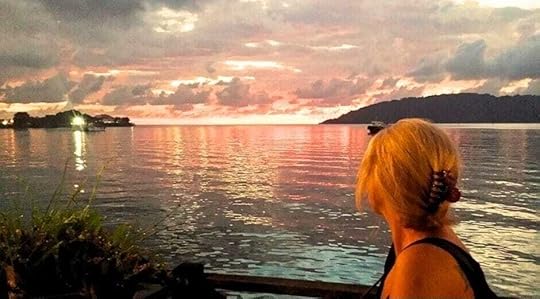 JANICE HORTON: SUNSET AT KOTA KINABALU (KK) MALAYSIAN BORNEO
Understanding Malaysia’s Climate
JANICE HORTON: SUNSET AT KOTA KINABALU (KK) MALAYSIAN BORNEO
Understanding Malaysia’s Climate
Firstly, it’s very important to note that Malaysia has two key monsoon weather systems.
The Northeast Monsoon (Nov–Mar): Affects East Coast of Peninsular Malaysia (the islands of Perhentian, Redang, Tioman, and the regions of Terengganu, Kelantan) As monsoons mainly impact sea conditions and visibility and not just rainfall this brings rough seas. For this reason, boat schedules to the east coast islands and many hotels on these islands close down completely between the months of November to March.
The Southwest Monsoon (May–Sep): This affects West Coast mildly (Langkawi, Penang, Pangkor). This is a less severe weather season which often means just brief showers. This also means that West Coast destinations can still remain viable all year.
 JANICE HORTON: SEPILOK ORANGUTAN CENTRE MALAYSIAN BORNEO
Malaysia’s Weather by Region
JANICE HORTON: SEPILOK ORANGUTAN CENTRE MALAYSIAN BORNEO
Malaysia’s Weather by Region
1. West Coast (Peninsular Malaysia)
Includes: Kuala Lumpur, Malacca, Penang, Langkawi, Pangkor
Best time: December–March
Avoid: No extreme off-season; rain is moderate year-round
Rainfall is more evenly distributed. A great choice during the East Coast monsoon. Langkawi often sees sunny spells even in “rainy” periods
2. East Coast (Peninsular Malaysia)
Includes: Perhentian Islands, Redang, Tioman, Terengganu, Kelantan
Best time: March–September
Worst time: November–February (monsoon shuts down beaches & ferries)
Waters are crystal clear and calm outside monsoon months. Many resorts are closed between November and February.
3. Malaysian Borneo (Sabah & Sarawak)
Includes: Kota Kinabalu, Sandakan, Semporna, Kuching, Mulu
Best time: March–October
Avoid: November–January (heaviest rainfall)
Rainfall is common but usually brief. Diving in Sipadan excellent from April–October. Wildlife viewing in Danum Valley best June–September.
 MALAYSIAN NORTH BORNEO HERITAGE RAILWAYWHICH MONTH BEST TO VISIT MALAYSIA?Month-by-Month Guide to Visiting Malaysia
Is January best time to visit Malaysia?
MALAYSIAN NORTH BORNEO HERITAGE RAILWAYWHICH MONTH BEST TO VISIT MALAYSIA?Month-by-Month Guide to Visiting Malaysia
Is January best time to visit Malaysia?
January is best for: West Coast (Langkawi, Penang), Kuala Lumpur
January is worst for: East Coast islands (closed due to monsoon)
Is February best time to visit Malaysia?Similar to January; great on the West Coast. East Coast is still rainy.
IS MARCH THE BEST TIME TO VISIT MALAYSIA?Transition month. East Coast begins reopening. Great for diving in Borneo.
IS APRIL THE BEST TIME TO VISIT MALAYSIA?Good weather across most regions. East Coast fully open. Borneo entering peak season.
IS MAY THE BEST TIME TO VISIT MALAYSIA?Start of Southwest monsoon, but mild. Still excellent across Malaysia. Calm seas on East Coast.
IS JUNE THE BEST TIME TO VISIT MALAYSIA?One of the best months overall. Peak season for beaches and wildlife in Borneo
IS JULY THE BEST TIME TO VISIT MALAYSIA?Great for island-hopping. Expect some humidity and short showers.
IS AUGUST THE BEST TIME TO VISIT MALAYSIA?Popular month, dry on East Coast. West Coast sees occasional showers.
IS SEPTEMBER THE BEST TIME TO VISIT MALAYSIA?Still good on the East Coast early in the month. Late September sees rains increasing in Borneo and East Coast.
IS OCTOBER THE BEST TIME TO VISIT MALAYSIA?Rain picks up on the East Coast. Borneo begins wetter season. West Coast remains comfortable.
IS NOVEMBER THE BEST TIME TO VISIT MALAYSIA?Northeast monsoon hits. East Coast islands close. Stick to West Coast & cities.
IS DECEMBER THE BEST TIME TO VISIT MALAYSIA?Busy and beautiful month for Penang, Langkawi, KL.
East Coast stormy and inaccessible. Borneo sees higher rainfall.
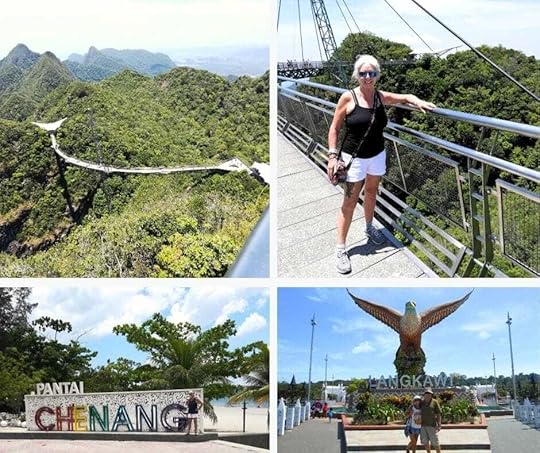 WEST COAST MALAYSIA – LANGKAWI ISLAND
Malaysia Traveller Itinerary
MALAYSIA WHERE TO GO MONTH BY MONTH
WEST COAST MALAYSIA – LANGKAWI ISLAND
Malaysia Traveller Itinerary
MALAYSIA WHERE TO GO MONTH BY MONTH
My suggested itinerary depending on which month(s) you plan to travel optimised for both weather and travel experience.
January – February
Where to go: West Coast: Kuala Lumpur, Penang, Langkawi — generally dry, good for city & beach.
Avoid: East Coast islands — rough seas, many resort closures.
Highlights: Explore Georgetown (Penang), street food, heritage. Beach time in Langkawi
Visit highlands like the Cameron Highlands (cooler and lush).
Tips: Book accomodation early as this is part of the West Coast dry season, so good weather, but can be busy.
Prepare for humid days and possible short showers.
March – April
Where to go: East Coast: The islands (Redang, Perhentian) reopen and seas calm.
Borneo: Ideal time for wildlife viewing and trekking.
Peninsular cities: Kuala Lumpur, Melaka, Ipoh.
Highlights: Scuba diving or snorkelling on east coast. Jungle trekking, wildlife in Borneo (orangutans, proboscis monkeys)
Festivals: possibly local cultural events, depending on year.
Tips: Ferries to East Coast islands resume so check schedules and get tickets in advance.
Bring lightweight clothes and good footwear for forest hikes.
May – June
Where to go: West Coast: Still good, though possible occasional showers (Southwest Monsoon).
Borneo: Great window before heavier rains; ideal for diving (Sabah) and wildlife.
Highlands / Inland: Cameron Highlands, Taman Negara.
Highlights: Dive resorts in Sabah (e.g., Sipadan) when sea visibility is good. Jungle experiences and canopy walks.
Relaxed beach time in West Coast with fewer crowds than December – February peak.
Tips: Expect humid, hot weather so pack sun protection. Book tours for Borneo early (popular time).
July – August
Where to go: East Coast: Still relatively good, though late August may see some increase in rain.
Borneo: Continue with wildlife, trekking, diving. Cities: Kuala Lumpur, Penang, Melaka – good for culture, food, nightlife
Highlights: Festivals: e.g., George Town Festival (Penang), Rainforest World Music Festival (Kuching) often held mid-year.
Great underwater experiences: clear seas, good visibility. Nature: hiking to mountaintops, rainforest walks.
Tips: Peak tourism, especially in islands and Borneo so consider booking accomodation in advance.
Use morning/afternoon strategy: plan outdoor activities early when skies are clearer.
September – October
Where to go: West Coast / Highlands: Good, with occasional showers.
East Coast: Early September is still good; later in October rain may build up.
Borneo: Generally still okay, but increasing rainfall later in the month.
Highlights: Scenic drives and cultural sightseeing (Melaka, Kuala Lumpur).
Visiting Cameron Highlands – lush and green thanks to earlier rains.
Wildlife and nature: birdwatching, jungle hikes.
Tips: Take advantage of shoulder season rates (slightly cheaper/fewer tourists).
Be ready for afternoon cloud build and occasional storms.
November – December
Where to go: West Coast: Still relatively safe and pleasant — Penang, Langkawi, Kuala Lumpur.
Avoid/Be Cautious: East Coast islands (due to Northeast Monsoon).
Borneo: Rain picks up especially in some coastal regions.
Highlights: City escapes: Museums, shopping, food tours in Kuala Lumpur and Penang.
High-altitude/highlands: Cameron Highlands remain a good escape.
Cultural festivals: possibility of Deepavali (varies), Christmas, New Year celebrations.
Tips: Be flexible as weather is more unpredictable. Pack for rain but don’t let it stop you doing indoor/cultural activities.
 WEST COAST MALAYSIA – PENANG ISLAND – STREET ART IN GEORGE TOWN
MALAYSIA WEATHER SUMMARY FOR ACTIVITIES
Beaches and Scuba Diving
WEST COAST MALAYSIA – PENANG ISLAND – STREET ART IN GEORGE TOWN
MALAYSIA WEATHER SUMMARY FOR ACTIVITIES
Beaches and Scuba Diving
East Coast – March–September
West Coast – December–March
Borneo – March–October
Nature / wildlife / trekkingBorneo: March – October.
Highlands (Cameron): fairly good year-round especially March – June or October – December.
 EAST COAST MALAYSIA – PERHENTIAN ISLANDS
EAST COAST MALAYSIA – PERHENTIAN ISLANDSLate-year for festive vibes (Nov–Dec).
Shoulder months (April, September, October) for fewer tourists and more manageable weather.
West Coast: Langkawi, Penang, Kuala Lumpur, Malacca.
East Coast: Tioman, Redang, Perhentian Islands.
Borneo: Kota Kinabalu, Kuching, Sandakan, Sipadan.
 KUALA LUMPUR MALAYSIA – PETRONAS TOWERS
BEST TIME TO VISIT MALAYSIA WEATHER
KUALA LUMPUR MALAYSIA – PETRONAS TOWERS
BEST TIME TO VISIT MALAYSIA WEATHER
West Coast (Peninsular Malaysia)
Best: December – March
Shoulder: April, November
Wettest: May – October
Destinations: Langkawi, Penang, Pangkor, Kuala Lumpur
Notes: Rainfall here is light/consistent; generally good year-round.
East Coast (Peninsular Malaysia)
Best: March – September
Monsoon: November – February
Destinations: Perhentian Islands, Redang, Tioman, Terengganu
Notes: Many resorts close Nov–Feb due to rough seas.
Borneo (Sabah & Sarawak)
Best: March – October
Wettest: November – January
Destinations: Kota Kinabalu, Kuching, Danum Valley, Sipadan
Notes: Great for wildlife and diving during dry months.
 JANICE HORTON: BATU CAVES KUALA LUMPUR MALAYSIA
BEST TIME TO VISIT MALAYSIA MONTH TO MONTH
JANICE HORTON: BATU CAVES KUALA LUMPUR MALAYSIA
BEST TIME TO VISIT MALAYSIA MONTH TO MONTH
January – February
Best For: Beaches (Langkawi, Penang) City breaks (Kuala Lumpur).
Avoid: East Coast islands
March – April
Best For: East Coast beaches. Borneo wildlife. Diving (Sipadan)
Also Good: Kuala Lumpur, Melaka
May – June
Best For: Borneo jungles. Diving. Highlands (Cameron Highlands).
Good: West Coast cities.
July – August
Best For: Island hopping (East Coast). Festivals (Penang, Sarawak). Wildlife treks
Busy Season Alert: Book ahead
September – October
Best For: City exploration. Highlands retreats. Cultural sightseeing.
Notes: East Coast begins storm season late September.
November – December
Best For: West Coast beaches. Shopping / food trips (KL & Penang). Festivals (Deepavali, Christmas, NYE)
Avoid: East Coast (heavy monsoon). Borneo diving
Malaysia is truly an all-year-round destination thanks to its unique geography, which ensures that even when one region is experiencing monsoon rains, another is enjoying sunny, travel-perfect weather!
With its two coastlines influenced by different monsoon seasons, travellers can always find clear skies – whether that’s on the West Coast during the Northeast Monsoon or the East Coast and Borneo when the Southwest Monsoon arrives.
Add in consistently warm tropical temperatures, vibrant cities, lush rainforests, diverse wildlife, rich cultural experiences, and world-class beaches open somewhere at any given time, Malaysia offers reliable travel opportunities every month of the year!
 CLICK TO SEE ALL MY POSTS ON MALAYSIA
CLICK TO SEE ALL MY POSTS ON MALAYSIA
The post Best Time To Visit Malaysia appeared first on The Backpacking Housewife.
November 3, 2025
Best Time to Visit Hoi An
If you’re wondering when is the best time to visit Hoi An, you’re already asking the right question, because weather and seasonal rhythm will shape almost everything that you plan to do in Hoi An from beach days to lantern festivals.
In this post, I’ll walk you through Hoi An’s usual weather patterns, the seasonal pros and cons, and how recent floods have affected the ancient town. I’ll also give you clear recommendations – not only on the best time to visit Hoi An but where to stay – so you can plan your visit to Hoi An with confidence at any time.
 Lantern Seller in Hoi An Old Town
Lantern Seller in Hoi An Old TownTABLE OF CONTENTS
BEST TIME TO VISIT HOI ANHOI AN FLOODSHOI AN MONSOON SEASONHOI AN RAINY SEASONHOI AN WEATHER FORECASTBEST TIME TO GO TO HOI ANRAINY SEASON: CHECK WITH THE HOTEL WHEN BOOKINGRAINY SEASON: WHERE TO STAY IN HOI ANHOTELS IN HOI AN BEST TIME TO VISIT HOI ANThe best time to visit Hoi An is certainly between February to April, as that time frame in Central Vietnam usually brings mild temperatures, low rainfall, and lots of sunshine, which makes walking the old town, taking boat rides on the Thu Bon River and visiting My Son or the local beaches, far more pleasant.
The mild temperatures between February through April make this a great time for cycling to rice paddies and riding between Hoi An and nearby Cua Dai and An Bang beaches.
Calm seas make this a perfect time for water sports and for visiting Cham Island.
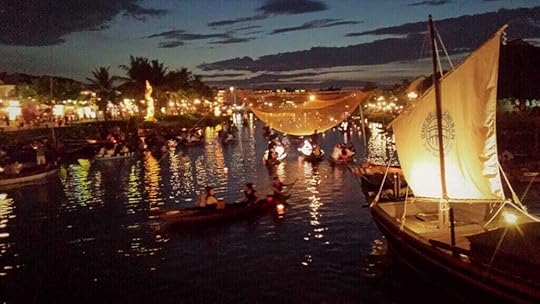 Boats on the Thu Bon River Hoi An at night
Boats on the Thu Bon River Hoi An at nightBetween February and April you’ll often find good hotel rates and less crowded restaurants and shops. And, if your priority is beach time and you want bright clear days for photography and food markets, then aim for this time in particular.
I’m planning to revisit Hoi An during March 2026. In March, you can expect sun-washed streets and warm drier days (average rainfall less than 50 mm) but manageable temperatures (around 24 – 30C / 75 – 86F) and a lower humidity compared to later months.
Hoi An is usually less crowded in March – still pleasantly busy but not yet as busy as in high-season – and it’s when the town at its most photogenic with one or two Full-Moon Lantern Festivals (depending on lunar dates) and with a slower rhythm of life that will invite you to walk, cycle, take boat trips, and to linger while exploring and sightseeing.
Read my full post on the wonderful things to do and see in The Best Of Hoi An.
 I’m planning to revisit Hoi An during March 2026
HOI AN FLOODS – BEST TIME TO GO TO HOI AN
I’m planning to revisit Hoi An during March 2026
HOI AN FLOODS – BEST TIME TO GO TO HOI AN
Typically, I would personally avoid travelling to Hoi An – and Central Vietnam – between September to November, because this is when the central coast gets its heaviest storms and floods – a risk that became painfully real in recent weeks (and at the time of writing).
Recent years have shown that during a Hoi An rainy season the town is vulnerable to intense rainfall and river flooding in the autumn months.
In late October 2025, Hoi An floods were tied to unusually intense rainfall events. Record rains and the river overflows caused severe flooding in Hoi An and across the entire of central Vietnam. Hoi An’s river surged causing hotels and businesses to evacuate.
Emergency responses and clean-up operations in Hoi An were extensive and widely reported in the international news as locals and authorities worked hard to rescue those trapped by rising water levels and to restore the tourism infrastructure in the old town.
Unfortunately, this seasonal pattern means that September to November in Hoi An is not just “rainy” because the region can experience tropical storms and serious river flooding that can affect transportation, accommodation and safety.
 Is it advisable to visit Hoi An in the rainy monsoon season?
HOI AN MONSOON SEASON
Is it advisable to visit Hoi An in the rainy monsoon season?
HOI AN MONSOON SEASON
Hoi An sits in central Vietnam and has a tropical monsoon climate with two broad seasons:
Dry season (roughly February to August): warm to hot days, lower rainfall. This is when beaches shine and walking the old town is comfortable
Wet season (roughly September to January): more rain, frequent heavy downpours, and a higher chance of tropical storms and river flooding. The rainiest months tend to be in the autumn (September to November).
 Fruit Sellers in Hoi An
HOI AN RAINY SEASON
Fruit Sellers in Hoi An
HOI AN RAINY SEASON
Is it safe and advisable to visit Hoi An in the rainy monsoon season? The short answer is yes, but of course, it also depends on your risk tolerance and what you want out of your trip.
Flood season in Hoi An is quieter and cheaper and some travellers find the moody skies and floating lanterns (lower water levels permitting) atmospheric.
Locals are resilient and many cultural experiences still run when it’s safe. But major storms can disrupt travel and damage infrastructure – as we’ve seen recently – and that’s not usually the kind of experience most travellers want.
So, if you do travel to Hoi An in the rainy season between September to November, it might be prudent to buy flexible tickets, check travel advisories, and consider trip insurance that covers weather cancellations.
I’d also advise you to monitor local news and weather in the days before arrival during September to November. After the recent floods, recovery conditions have changed quickly. News outlets and local tourism sites will report closures and transport updates.
Flexible bookings will allow you to choose refundable hotel rates and changeable travel tickets during the wet season. I like to book with (my affiliate link) Booking.com and choose a cancellation option.
Travel insurance that covers weather-related cancellations and emergency evacuation is a good idea and worth considering if you’re visiting in or near the monsoon window.
If you do visit after floods, it’s an opportunity to support local businesses as spending with local guides, restaurants and tailors will help the community rebuild. Many businesses will reopen quickly with resilience in rainy season and with gratitude for your custom.
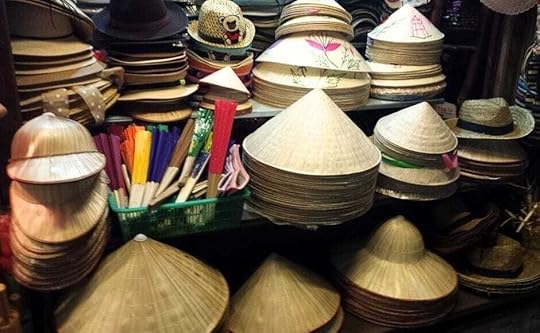 Vietnamese Hats in Hoi An Vietnam
HOI AN WEATHER FORECAST – BEST TIME TO GO TO HOI AN
Vietnamese Hats in Hoi An Vietnam
HOI AN WEATHER FORECAST – BEST TIME TO GO TO HOI AN
January: End of wet season; variable. Cooler nights. Good for quieter visits if rains have eased. February to April: Prime window. Dry, mild, ideal for sightseeing and beaches.
May to August: Hotter, especially June to August. Good beach weather. Expect heat and humidity. Peak summer crowds in some weeks.
September to November: Monsoon season. High risk of heavy rains and floods. Recent severe flooding in late October 2025 is a reminder to be cautious.
December: Cooler, occasional rain. December is a decent alternative to the busy spring months but watch for variable weather.
SEE MY FULL POST ON THE BEST AND WORST TIME TO VISIT VIETNAM
 Click to read When Is The Best And Worst Time To Visit Vietnam
BEST TIME TO GO TO HOI AN
Click to read When Is The Best And Worst Time To Visit Vietnam
BEST TIME TO GO TO HOI AN
If you decide to visit Hoi An in the wet season (the rainiest months tend to be in the autumn and between September and November) when you can usually expect more rain, frequent heavy downpours, and a higher chance of tropical storms and river flooding.
I recommend you choose where to stay in Hoi An with care and consideration.
Select a hotel that has good reviews and has experience and protocols in place for flood events (moving guests to higher floor, arranging transport, etc). If the hotel is located by the river, are staff trained and prepared to provide appropriate responses and maintain communication? Is your room or block above a known flood level? What is the evacuation plan if water rises? Do they have back-up power and elevated entrance?
 RAINY SEASON: CHECK WITH THE HOTEL WHEN BOOKING
RAINY SEASON: CHECK WITH THE HOTEL WHEN BOOKING
When you contact any hotel, if you are planning a stay during rainy season, you might like to ask the following questions to gauge how resilient they are to flooding:
“What is ground-floor elevation in meters relative to river level or sea level?”
“Have you had recent floods, and what was the impact on the property and guests?”
“Do you have an evacuation or guest-relocation plan if water rises rapidly?”
“Are guest room floors above known historic flood marks?”
“Is the hotel outside the low-lying wards of Cẩm Nam / Minh An / near the Hoài River?”
“Is there backup power, transport options (boat/raised walkway) in case the ground floor is submerged?”
“Is travel insurance or flexibility offered if there is a flood event during our stay?”
 Japanese Bridge – Hoi An Old Town
Japanese Bridge – Hoi An Old Town RAINY SEASON: WHERE TO STAY IN HOI AN
RAINY SEASON: WHERE TO STAY IN HOI AN
Here is a list of ten hotels around the Hoi An area of varying budgets and, where available, information and commentary on their flood-resilience or specific location.
This list is based on publicly available information on its location, elevation, past traveller reviews and comments, to help you compare and choose your preferred accommodation in Hoi An. I recommend you always check directly with the hotel for up-to-date status and conditions.
FIND YOUR PERFECT PLACE TO STAY IN HOI AN USING MY INTERATIVE MAP
HOTELS IN HOI ANHoi An Historic Hotel: if you prefer being right in the heart of ancient town, Hoi An Historic Hotel is close to the centre of the old town but according to advice on forums is still outside the most at-risk low-lying zone.
Emerald Hoi An Riverside Resort: This resort has a guest review that specifically mentions a recent flood event: “The staff recommended us to stay in a higher level or evacuate to another resort. They arranged boat transport for guests to the airport.”
Almanity Hoi An Resort & Spa: Several traveller forum threads say the Almanity is in an elevated area of Hoi An and “out of the flood zone” but still only 1km from Hoi An Ancient Town.
EMM Hotel Hoi An: This hotel is considered to be a safer choice by experienced travellers, with reference to flood-zone avoidance. “EMM Hotel … out of the flood zone … I have followed a personal rule not to stay in the flood zone from September to mid-December for years.”
Four Seasons Resort The Nam Hai: This luxury resort lies outside the old-town river-zone, being on Ha My Beach (coastal) rather than riverside in the low-lying old town area. Mentioned in an article about post-flood tourism recovery in Hoi An’s region.
Hoi An is one of those places that lives in postcards and memory with honey-coloured colonial facades, lantern-lit nights drifting on the Thu Bon River, and narrow alleyways filled with tailors, cafés and a slow pace of life.
Whenever you plan to visit Hoi An – at whatever time of year suits you best – the weather and seasonal rhythm will almost certainly shape almost everything you’ll do here, from beach days to lantern festivals, to whether your walking shoes get wet and muddy.
 Lantern-lit boats on the Thu Bon River
Lantern-lit boats on the Thu Bon RiverI hope you’ve found this post helpful in planning your trip to Hoi An Vietnam.
I love Vietnam – it’s one of my most favourite countries in the world – and I’ve travelled and explored Vietnam several times from the Mekong Delta and Ho Chi Minh City in the South, through the central region of Danang, Hoi An, and Hue, to the North and Haiphong, Cat Ba, and Halong Bay. Click on the box below to see all my posts on Vietnam!
 Click here to see all my posts on Vietnam!
Click here to see all my posts on Vietnam!

The post Best Time to Visit Hoi An appeared first on The Backpacking Housewife.
October 22, 2025
Dorset: The Lawrence of Arabia Trail
When you picture the Lawrence of Arabia Trail, you probably think of vast deserts, camel caravans, and windswept dunes.
But what if I told you that one of Britain’s greatest adventurers spent his final years seeking peace – not in the Middle East – but in the quiet rolling hills of Dorset in England?
On a recent trip to Dorset on the south coast of England, to my surprise, I inadvertently found myself on the Lawrence of Arabia Trail when I came across a small stone cottage called Clouds Hill.
The cottage had belonged to T.E. Lawrence (yes, that Lawrence)!
After leading Arab forces in the desert revolt during World War I, Lawrence became an instant legend – a diplomat, soldier, and a reluctant celebrity. But fame never sat easily with him and so in 1923 he bought the cottage and here he could swap his fame for quiet solitude, his desert robes for a leather jacket, and his camel for his beloved Brough Superior motorcycle.
He lived at Clouds Hill Cottage until his retirement and his untimely death in a motorcycle accident while riding his Brough Superior motorcycle in 1935.
Now cared for by the National Trust, the cottage remains almost exactly as he left it – sparse, intimate, and deeply personal.
There’s no electricity, and the rooms are filled with books, maps, and the scent of old wood smoke. Lawrence had called it his “earthly paradise.” I was immediately enchanted by the modest cottage in the midst of the breathtaking Dorset countryside, and I was suddenly curious about the man and the legend that is T.E Lawrence – or T.E Shaw – as he later preferred to be known while trying to preserve what was left of his fragile anonymity.
Address: Clouds Hill Cottage, Clouds Hill, Wareham, Dorset, BH20 7NQ
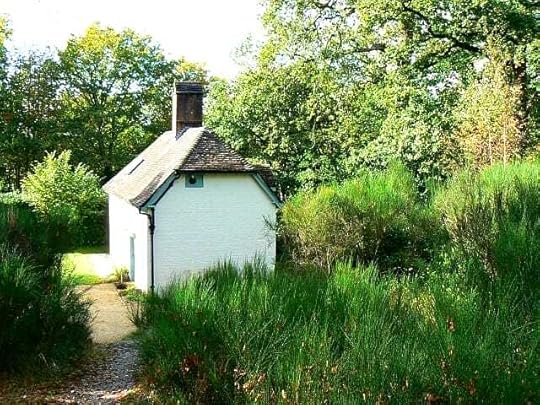 Photo: Brian Robert Marshall / Clouds Hill DorsetThe Lawrence of Arabia Trail
Photo: Brian Robert Marshall / Clouds Hill DorsetThe Lawrence of Arabia TrailTABLE OF CONTENTS
Discovering T.E. Lawrence’s Dorset HideawayThe Lawrence of Arabia TrailSt Martin on the Walls ChurchWAREHAM DORSETWHERE TO STAY IN WAREHAM DORSETST NICHOLAS CHURCH MORETONWHERE TO STAY IN MORETON DORSETLAWRENCE OF ARABIA GRAVETHE MYSTERY OF THE WHITE ROSESWHO WAS LAWRENCE OF ARABIA?THE BROUGH SUPERIOR: LAWRENCE’S BELOVED MOTORCYCLET. E. LAWRENCE’S DEATH – TRAGIC ACCIDENT OR BRUTAL MURDER?THE LAWRENCE OF ARABIA TRAIL IN DORSET St Martin on the Walls ChurchLater the same day, my interest in Lawrence’s life and death (1888-1935) was further piqued, when stopping off to explore the Dorset market town of Wareham, where I popped into the oldest church in Dorset – St Martin-on-the-Walls Church – which dates back to the early 11th century (1020) and was built during the reign of Saxon King Cnut (Canute).
Located on East Street, Wareham, from the outside, St Martin’s looks humble – a small stone building with a simple tower and a weathered charm – but the building is a remarkable survivor from England’s early medieval past.
Once inside, history seemed to echo from its thousand year old walls, and I marvelled at a rare 13th-century fresco on the north wall, a depiction of St Martin, alongside other original Saxon stonework.
 Photo: Janice Horton. St Martin On The Walls Church Wareham, Dorset
Photo: Janice Horton. St Martin On The Walls Church Wareham, DorsetAnd, lo and behold, also here is a beautifully life sized carved effigy of T.E. Lawrence (Lawrence of Arabia!)
The effigy, installed here in September 1939, was sculptured by Lawrence’s friend, Erich Kennington from a three ton block of Portland stone.
A visitors book with an image of Lawrence astride his Brough Superior motorcycle invites comments and a handwritten poem by James Bramwell is on display next to the effigy.
It reads: This horizontal block of stone, Miraculously not a man, Is touched with presence nobler than The hollow scaffolding of bone. The chiselled tribute of a friend Who poured the harvest of his art, The stored up grains of a full heart To swell another’s plenteous end. He lies – so would a hero lie – At rest from being incomplete. When thirsting through life’s fevered heat Now bathed in cool eternity.
Immortally, Lawrence is depicted in Arab dress with the curved Jambiya dagger in his hand and a whip at his side. The Jambiya dagger was famously given to Lawrence by Sherif Nasir, Emir Feisal’s cousin, after the capture of Aqaba in July 1917.
Lawrence’s head rests on a camel’s saddle and beside his head are his favourite books – The Oxford Book of Verse, The Greek Anthology, and Mallory’s Morte D’Arthur. His feet rest against a block of Hittite sculpture of two bulls fighting, which represent both his archaeological research in the Near East and his own struggles with the Arab Campaign of the First World War.
Today, St Martin-on-the-Walls in Wareham is no longer used for regular worship but is lovingly cared for as a historic monument by the Churches Conservation Trust.
Address: St Martin-on-the-Walls Church. East Street, Wareham, Dorset BH20 4AD
 Photo: Janice Horton. A life sized carved effigy of T.E. Lawrence (Lawrence of Arabia)
Photo: Janice Horton. A life sized carved effigy of T.E. Lawrence (Lawrence of Arabia) WAREHAM DORSET
WAREHAM DORSET
Following Lawrence’s footsteps through this part of Dorset – from his humble cottage to seeing his life size effigy displayed in the oldest church in Dorset – feels like I’m following a trail of clues to key places in an unwritten memoir that reveals his story!
I later learned that Lawrence would often pop into the nearby town Wareham on his motorcycle and meet with writer friends including Thomas Hardy in the ‘Anglebury Pub’ (now a hotel and restaurant).
Wareham is a charming town, with its riverside setting on the River Frome, it offers peaceful walks, boat trips, and easy access to the Isle of Purbeck and Jurassic Coast. Once a strategic stronghold, its ancient earth ramparts still encircle the town, among the best-preserved Saxon defences in England. These days, with its cobbled streets, cozy pubs, tea shops set in Georgian buildings, independent shops and lively Saturday market, Wareham has a timeless feel.
WHERE TO STAY IN WAREHAM DORSETUSE MY INTERACTIVE MAP TO FIND YOUR PERFECT PLACE TO STAY IN WAREHAM
Also in Wareham there is a Town Museum displaying items of Saxon and Roman Heritage AND an entire display with lots of photographs and exhibits for T.E Lawrence!
I’m amazed – in a totally unintentional way – I’m back on the Lawrence of Arabia Trail again!
The Wareham Town Museum is essentially a T E Lawrence museum and explores Lawrence’s early life – Lawrence the Archaeologist – Lawrence and The Arab Revolt – The Post War Years – and A Reconstruction of The Scene of The Accident. There’s even a life sized cardboard image of the man himself in his Arabian gowns!
There’s also a copy of The Seven Pillars of Wisdom (published in 1926) here in a glass case together with a small suitcase said to have belonged to him. There are lots of photos to see and newspaper cuttings to read that are mounted in frames.
Address: Wareham Town, Dorset, South West England. BH20. 50.686°N 2.1099°W
 Photo: Janice Horton. A small suitcase and book belonging to T.E. Lawrence
Photo: Janice Horton. A small suitcase and book belonging to T.E. LawrenceThe Lawrence of Arabia Trail ST NICHOLAS CHURCH MORETONFollowing Lawrence’s footsteps through this part of Dorset – from his humble cottage, to seeing his life story displayed on the walls of the town’s museum – feels like I’m following a trail of clues to key places in an unwritten memoir that reveals his story!
The next stop on my Lawrence of Arabia Trail, is to visit St Nicholas Church in Moreton and to pay my respects to T.E Lawrence at his graveside.
St Nicholas Church dates from 1776 but in 1940, the church was largely destroyed by a German bomb. The church was rebuilt after the war but the windows were replaced with plain glass.
But in 1955, another Lawrence – Lawrence Whistler – was commissioned to engrave the thirteen plain windows in the church.
The work took thirty years and is the only example of its kind in the world and now St Nicholas in Moreton is renowned for its unique windows and visitors come from far and wide to see them.
Whistler engraved both sides of the glass to create the three dimensional ethereal effect and each window has an intricate and individual theme. I particularly admired The Four Seasons Window (1974) and the Galaxy Window which is above the west door (1984) with its spiral galaxies and stars turning into flowers, space walkers, chromosomes and sheaves of corn.
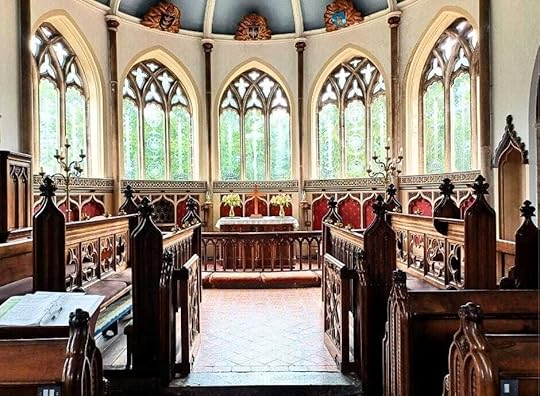 Photo: Janice Horton. Moreton Church Dorset: Each window has an individual theme
Photo: Janice Horton. Moreton Church Dorset: Each window has an individual themeMy favourite window – I called it ‘the widow window’ – is also known as the Trinity Chapel Window (1982). It is engraved in memory of an RAF pilot who died in a dogfight while flying his Spitfire over France and as remembered by his heartbroken young widow.
I had a lump of emotion in my throat at viewing the delicately engraved images of the pilot’s view of their home, of Salisbury Cathedral near to his training base, and the tangled wreckage of his plane just visible in one corner, and the dates of their short marriage from 1939 to1940.
Whistler’s controversial final, thirteenth window, on the theme of ‘Forgiveness’ is also called the ‘Judas’ window. The window design was so contentious that the window was not installed into the church until 2014 – fourteen years after Whistler’s death – and only on the proviso that the window is visible only from outside the church.
 Photo: Janice Horton. Whistler’s controversial final thirteenth window
Photo: Janice Horton. Whistler’s controversial final thirteenth window It is of a sinister image of Judas, the betrayer of Christ, portrayed as a figure hanging from the branch of a tree, coins spilling from his hand and turning into flowers as they reach the ground.
What a story – what an incredible church – I was mesmerised by those windows!
Address: Church of St Nicholas, Moreton, Dorset. DT2 8RH
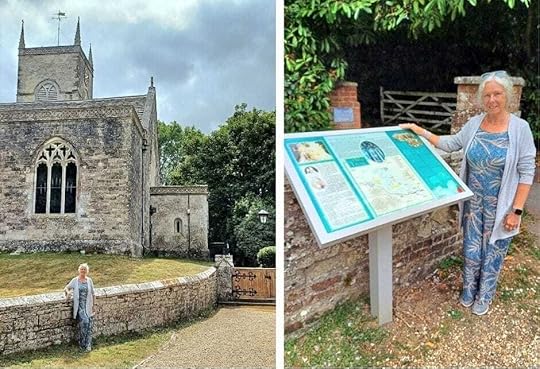 Photo: Janice Horton. What an incredible church – those windows!WHERE TO STAY IN MORETON DORSET
LAWRENCE OF ARABIA GRAVE
Photo: Janice Horton. What an incredible church – those windows!WHERE TO STAY IN MORETON DORSET
LAWRENCE OF ARABIA GRAVE
But back to Lawrence of Arabia and the trail of T E Lawrence because here at St Nicholas Church in Moreton, on May 21st 1935, is where his funeral was held.
It was attended by many former comrades from his service days, soldiers, statesmen, and writers, and most notably Winston Churchill and Lady Nancy Astor. King George V sent a telegram of condolence.
In accordance with his wishes, attendees wore plain clothes and there were no flowers on the coffin. But there is a mystery still unsolved to this day about white roses placed on his grave!

THE MYSTERY OF THE WHITE ROSES
T E Lawrence’s modest grave – the final resting place of a man who lived larger than legend – draws visitors from around the world. Yet for decades, one tribute has stood out among all others – a yearly gift of white roses left in silence and secrecy.
The story begins around 1974, nearly forty years after Lawrence’s death, when on August 16th, his birthday, a bouquet of forty-six pure white roses appeared at his grave in Moreton Churchyard. One for each year of Lawrence’s life.
A single white rose was also left at the doorstep of his cottage at Clouds Hill.
In 1994, no bouquet had appeared that August. Yet, other visitors in later years claimed to have seen the flowers return, suggesting the ritual quietly continued into the early 2000s. Some say the flowers stopped with the death of the mysterious benefactor who was believed by many to be an American woman who had long admired Lawrence. But the identity of the admirer has never been confirmed. Over the years, theories have blossomed like the roses themselves.
The florist who handled the order maintained strict discretion, revealing only that the flowers were prepaid, delivered without fail, and never accompanied by a name or message. Whoever the sender was, they wanted no recognition, only to honour Lawrence in silence.
Today, the mystery of the white roses has become part of the folklore surrounding Lawrence’s life and death and visitors still leave flowers as if to keep the tradition alive in spirit.
I visited Lawrence’s grave on the 20th August this year – four days after his birthday – and as you can clearly see that just behind the vase of sunflowers in the photo I took below – there is a bouquet of white roses!
 Photo: Janice Horton. T E Lawrence Grave: The mystery of the white roses!
Photo: Janice Horton. T E Lawrence Grave: The mystery of the white roses!The place of burial and grave of T E Lawrence is in the adjacent annexed churchyard a little further down the lane from the Church of St Nicholas and in a quiet setting.
The inscription on his headstone reads: To the dear memory of T. E. Lawrence fellow of All Souls College Oxford. The hour is coming and now is when the dead shall hear the voice of the Son of God and they that hear shall live.
Address: St Nicholas Churchyard, Moreton, Dorset, England
 Photo: Harris & Ewing, Public domain, via Wikimedia Commons
WHO WAS LAWRENCE OF ARABIA?
Photo: Harris & Ewing, Public domain, via Wikimedia Commons
WHO WAS LAWRENCE OF ARABIA?
Thomas Edward Lawrence was born in Caernarvonshire in North Wales in 1888. He was the illegitimate son of Thomas Chapman, an Irish aristocrat, and Sarah Maden, a governess.
Thomas and Sarah ran off together – which would have been a great scandal at the time – to various locations including France and Scotland having ‘adopted’ the new name of Lawrence.
Although they never married they went onto have five sons. T.E. was the second born son and he was known in the family as ‘Ned’. He grew up a keen reader of travel books.
From 1907 to 1910, he studied history at Jesus College, Oxford, and visited Arabia on archaeological expeditions. After graduating, he worked as an archaeologist at Carchemish in Syria from 1911 to 1914, a period where he learned to speak Arabic.
Aa a young man, he grew to despise the Turkish occupation of Arab lands. When war broke out, he was posted to the Arab Bureau in Cairo as an intelligence agent, tasked with promoting rebellion against the Ottoman Empire.
Forging a close relationship with Emir Faisal, he helped the Arabs carry out attacks on the Hejaz railway, which was the Turks only way of supplying Medina. In 1917, he arranged a successful operation to capture Port Aqaba.
Lawrence was awarded the Distinguished Service Order and after the First World War, from his legendary role in the Arab Revolt, he became one of the most famous men in the world. Yet he despised the spotlight and by the 1920s, he had withdrawn from public life, enlisting under assumed names in the RAF and Army. During this time he wrote a best-selling memoir ‘Seven Pillars of Wisdom’ (1926). In 1922 he joined the RAF as John Hulm Ross but his identity was discovered and uncovered that same year by the Daily Express.
He then took another new name, T E Shaw, and joined the Tank Corps at nearby Bovington.
 Photo Credit : Janice Horton. T.E. Lawrence riding his beloved Brough Superior Motorcycle
THE BROUGH SUPERIOR: LAWRENCE’S BELOVED MOTORCYCLE
Photo Credit : Janice Horton. T.E. Lawrence riding his beloved Brough Superior Motorcycle
THE BROUGH SUPERIOR: LAWRENCE’S BELOVED MOTORCYCLE
Between 1922 and 1935, Lawrence owned seven Brough Superiors – known as the Rolls-Royce of motorcycles – they were all custom-built by George Brough in Nottingham.
His final bike, Brough Superior SS100 motorcycle, was his pride and joy which he famously called his ‘steel horse’. On May 13, 1935, while riding near Clouds Hill, Lawrence swerved to avoid two cyclists and crashed. He died six days later, aged just 46.
The accident changed history. The surgeon who treated him, Hugh Cairns, went on to pioneer the use of motorcycle helmets, saving countless lives.
 T.E. Lawrence astride his ‘steel horse’
T.E. Lawrence astride his ‘steel horse’

T. E. LAWRENCE’S DEATH – TRAGIC ACCIDENT OR BRUTAL MURDER?
Just recently, still fascinated by the inspirational and controversial life and times and death of T E Lawrence, in an effort to get to understand him better, I watched the 1962 movie Lawrence of Arabia starring Peter O’Toole.
I also watched the sequel A Dangerous Man: Lawrence after Arabia (1992) starring Ralph Fiennes as T.E. Lawrence and Alexander Siddig as Emir Faisal. There is also Lawrence: After Arabia (2020) which is based on a conspiracy theory that his death was not an accident but an assassination.
Both films shine an accusing light on those who, in 1935, might have considered the newly retired T E Lawrence as a dangerous man and at the very least a ‘loose cannon’. And those who perhaps had the motive, means, and opportunity to murder him and whom had the power to arrange a cover up in order to make his death look like a road traffic accident.
Examining the same theory, there is also the new feature length documentary (2024) Who Killed Lawrence of Arabia that similarly investigates the crash on 13th May 1935, which resulted in the death of T.E. Lawrence.
It seems there were many back then – with World War Two looming on the horizon – who had political reasons to want him out of the way and some who might have been worried about what was to be uncovered in his newly finished and yet unpublished book ‘The Mint‘ which describes his time in the RAF under an assumed name of Ross. It was published posthumously in 1955.
 Dorset countryside along the Lawrence of Arabia Trail
THE LAWRENCE OF ARABIA TRAIL IN DORSET
Dorset countryside along the Lawrence of Arabia Trail
THE LAWRENCE OF ARABIA TRAIL IN DORSET
If you, like me, have found yourself both intrigued and fascinated by the life and the death of T. E Lawrence, I hope you’ve enjoyed following the trail of the desert hero who found his heaven in Dorset, and making a pilgrimage into the life of a man torn between adventure and peace. From the undulating dunes of Arabia to the rolling hills of Dorset, his story reminds us that sometimes the greatest journeys will lead us home.

The post Dorset: The Lawrence of Arabia Trail appeared first on The Backpacking Housewife.
October 4, 2025
Cherry Blossoms in Daegu
Cherry blossoms in Daegu are magical. As one of South Korea’s warmer cities, cherry blossoms (벚꽃 / beotkkot) tend to bloom slightly earlier here than in more northerly or inland cities.
As a regular visitor to South Korea and to the City of Daegu (my son and his family have lived in Daegu for the past twelve years) I can report to you that the cherry blossom in Daegu is special and abundant, with a wonderful variety of cherry blossom lining streets and paths and parks, which is why the season of hanami (flower viewing) is a celebrated tradition in Daegu every year.
Blossom petals are symbolic in poetry, art, and daily life and represent beauty and renewal, so people visit parks and take picnics to sit beneath blossoms, they take walks through cherry blossom tunnels.
Many of the cherry trees in South Korea are native types and others are of the Yoshino variety, originally from Japan, and they are pale pink and white and delicate.
 In Duryu Park Daegu with our grandson
In Duryu Park Daegu with our grandsonTABLE OF CONTENTS
CHERRY BLOSSOMS IN DAEGUWHERE TO SEE CHERRY BLOSSOMS IN DAEGUFIND YOUR PERFECT PLACE TO STAY IN DAEGUCHERRY BLOSSOMS DAEGU ITINERARYCHERRY BLOSSOMS SEASON FORECAST DAEGUTIPS FOR CHERRY BLOSSOM SEASON IN DAEGUWHY SOUTH KOREA’S CHERRY BLOSSOM SEASON OUTSHINES JAPAN’SSPRING IN FULL BLOOM KOREAN STYLE!IS DAEGU WORTH VISITING WHERE TO SEE CHERRY BLOSSOMS IN DAEGU Cherry Blossoms in Daegu Map
Cherry Blossoms in Daegu MapThe Daegu E-World Blossom Picnic (대구 이월드벚꽃축제) is an annual event (Late March – early April) in Duryu Park. This festival is Daegu’s celebration of spring and the entire E-World amusement park and surrounding Duryu Park with its ponds and pavilions.
The highlight of the event is the magical night blossom illuminations, the pink lights, and live music in the park, which attract families, young lovers, and photographers. It’s best in the early bloom season and, if you go in the evening, bring something warm and plan for crowds on weekends.
Palgongsan Cherry Blossom Festival (팔공산 벚꽃축제) held in Palgongsan Mountain Fountain Square. Visitors can enjoy the cherry trees by walking along the scenic road that runs from Baekam 3-geori to Sutaeji. Festivities include live musical performances and traditional games and local food stalls and markets. A cable car ride is available to take visitors to the top of the mountain for easy access to the scenic trails or a better view of the blossoms.
Donghwasa Temple (동화사) Cherry blossoms can be seen blooming at the Donghwasa Temple Complex (details below) on the southern slopes of Palgongsan Mountain Park where due to the elevation of the site the blossoms normally bloom a week later than those on lower aspects of Daegu.
Ayanggyo (Bahyong) Bridge (아양교) crossing the Daegu River promises a photogenic and romantic tunnel of blossoms through a beautiful pedestrian walkway of cherry trees.
Apsan Park (앞산공원) offers panoramic views from its observation deck on the top of Apsan Mountain – accessible via a cable car.
Mangudang Park (망우당공원) offers a more peaceful spot to enjoy the blossoms amongst historic landmarks.
Dalseong Park (달성공원) also offers historic features amongst its blossoms including a fortress.
 FIND YOUR PERFECT PLACE TO STAY IN DAEGU
FIND YOUR PERFECT PLACE TO STAY IN DAEGU
LUXURY STAY – THE DAEGU MARRIOTT HOTEL
MID-RANGE STAY – FEBRUARY HOTEL DAEGU
BUDGET STAY – TOYOKO INN DAEGU HOTEL
CHERRY BLOSSOMS DAEGU ITINERARYHere’s my suggested day (or partial day) itinerary if you’re in Daegu and want to make the most of cherry blossom season:
Morning: Start early at Palgongsan / Donghwasa Temple for the natural scenery and views.
Midday: Head into town for lunch; afterwards, visit Suseong Lake for a lakeside café + more blossoms.
Afternoon: Spend time at Duryu Park and maybe the E-World area, catching the blossom paths and ponds.
Evening: Take a walk under the Ayanggyo bridge / tunnel or head to E-World if there’s a night illumination; finish with dinner nearby.
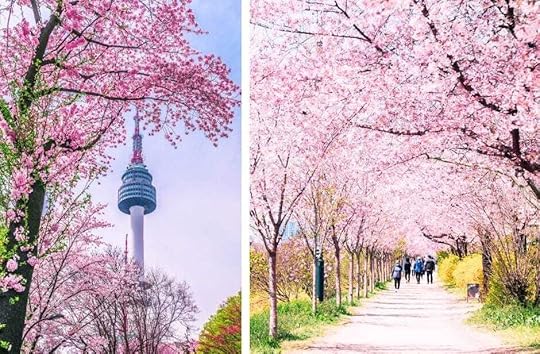 Cherry blossoms in Daegu are magical!Klook.com (function (d, sc, u) { var s = d.createElement(sc), p = d.getElementsByTagName(sc)[0]; s.type = "text/javascript"; s.async = true; s.src = u; p.parentNode.insertBefore(s, p); })( document, "script", "https://affiliate.klook.com/widget/fe..." );
CHERRY BLOSSOMS SEASON FORECAST DAEGU
Cherry blossoms in Daegu are magical!Klook.com (function (d, sc, u) { var s = d.createElement(sc), p = d.getElementsByTagName(sc)[0]; s.type = "text/javascript"; s.async = true; s.src = u; p.parentNode.insertBefore(s, p); })( document, "script", "https://affiliate.klook.com/widget/fe..." );
CHERRY BLOSSOMS SEASON FORECAST DAEGU
These bloom predictions are estimations but might help you with your planning. The cherry blossom season in Daegu typically peaks in late March to early April. In 2025, many forecast sources projected Daegu’s bloom start around March 29 and full bloom around April 4. The window of optimal viewing (full bloom) is typically just 5 to 7 days.
So, for 2026, the predicted start of bloom of March 25- 28 and peak bloom around March 29 is consistent with the pattern of Daegu’s bloom timing shifting toward late March.
Any predicted dates and suggested times for the full bloom are therefore speculative, because the cherry blossom season in Daegu and elsewhere in South Korea depends heavily on winter and early spring weather, temperatures, frost, rain, wind, etc.
Higher elevation spots (mountains, hills) will often bloom slightly later than lowland areas.
So, for the Daegu area, blossoms in Palgongsan, Donghwasa, and hilltop vantage points, might lag behind lower lying city park and riverside spots.
I would suggest that as the 2026 season draws near, to keep an eye on official forecasts from Korea’s Forest Service, tourist boards, and local news channels.
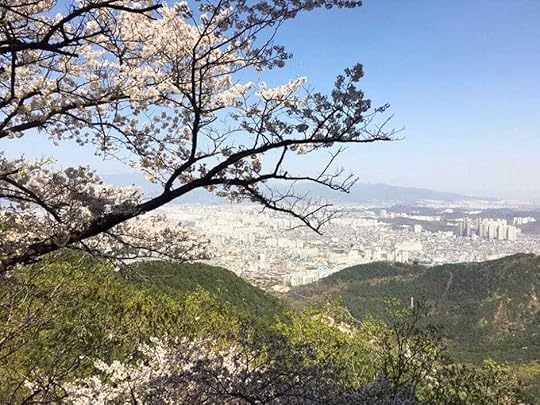 Apsan Mountain: Early springtime cherry blossoms in Daegu
TIPS FOR CHERRY BLOSSOM SEASON IN DAEGU
Apsan Mountain: Early springtime cherry blossoms in Daegu
TIPS FOR CHERRY BLOSSOM SEASON IN DAEGU
Timing: Aim for full bloom, but try to arrive a day or two after peak if you prefer fewer crowds (though blossoms may begin to fall then). Check local forecasts.
Time of day: Early morning gives soft light and fewer people and evening can be lovely especially with light shows but expect more visitors.
Clothing: Spring can be warm in the day but chilly evenings; have a layer. Also, petals falling can get everywhere. Comfortable shoes are a must.
Transport: Many spots are reachable by public transport or short taxi rides but in busy times traffic can get congested.
Photography: For the best photos, look for ‘blossom tunnels’ and paths framed by blossoms on both sides, reflections (in ponds or lakes), views from height (hills or observatories). Overcast days can also offer soft light.
Cultural respect: Though blossoms are beautiful, the trees are delicate, so avoid climbing or damaging branches. Respect public spaces and if attending festivals do check whether there are entrance fees or times.
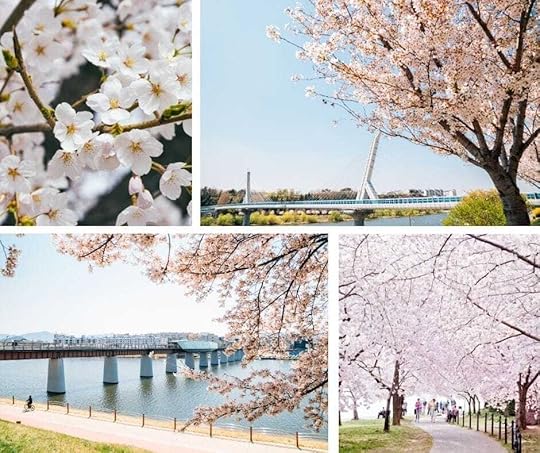 Cherry Blossoms Daegu
WHY SOUTH KOREA’S CHERRY BLOSSOM SEASON OUTSHINES JAPAN’S
Cherry Blossoms Daegu
WHY SOUTH KOREA’S CHERRY BLOSSOM SEASON OUTSHINES JAPAN’S
When spring sweeps across East Asia, millions of travellers dream of pink petals drifting through the air and for a long time Japan has been the poster child for these fleeting blooms.
But in recent years, South Korea has quietly emerged as the ultimate destination for cherry blossom lovers. Especially cities like Daegu, Seoul, and Gyeongju, that can be even more rewarding than in Japan.
Japan’s famous sakura spots are beautiful but they’re also packed. Tokyo’s Ueno Park, Kyoto’s Philosopher’s Path, or Osaka Castle can feel like moving through a sea of selfie sticks during full bloom.
In contrast, South Korea offers a more relaxed, local atmosphere, that feels less like a tourist spectacle and more like being part of a spring celebration with locals.
From Daegu’s Suseong Lake to Seoul’s Yeouido Park, you’ll find families picnicking, couples strolling, and students taking photos, rather than waves of tourists.
Also, Japan has also become an expensive destination to visit during cherry blossom season when flights, hotels, and train passes soar in price. Meanwhile, cherry blossoms Korea remains remarkably budget-friendly with hotels and guesthouses staying reasonably priced.
Public transport (KTX, subways, local buses) is efficient and affordable and street food, cafés, and even festival snacks cost less than in Japan.
That means more kimchi pancakes and cherry blossom lattes for your travel budget and less stress over costs!
One of Korea’s biggest advantages is its size because the country’s high-speed train network makes it easy to travel from Seoul to Daegu and onto Gyeongju and Busan in under a week.
And, each city offers its own unique blossom vibe and guide from urban festivals to tranquil temples and all without long commutes or expensive rail passes.
Japan’s top cherry blossom places are much farther apart, meaning more time on trains and more money on transport. In Korea, you can see everything in one seamless trip.
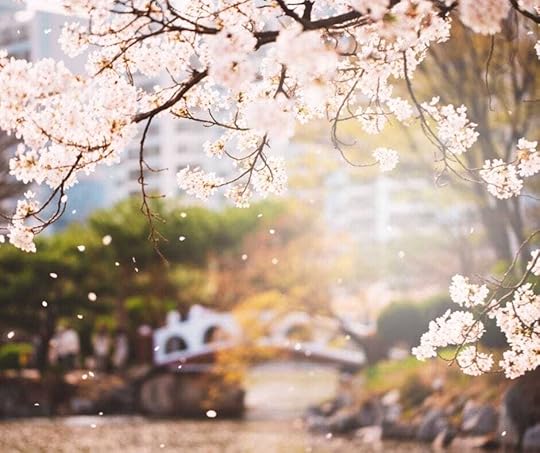 Cherry Blossoms in Daegu: Pink magic with a more authentic twist!
SPRING IN FULL BLOOM KOREAN STYLE!
Cherry Blossoms in Daegu: Pink magic with a more authentic twist!
SPRING IN FULL BLOOM KOREAN STYLE!
If you’ve already experienced Japan’s sakura season, or want something more relaxed and less commercial, Korea is the perfect alternative. You’ll still get the breathtaking beauty of cherry blossoms, but with shorter lines, lower costs, more cultural variety and a vibrant local spirit.
It’s the same pink magic just with a more authentic and creative twist!
Klook.com (function (d, sc, u) { var s = d.createElement(sc), p = d.getElementsByTagName(sc)[0]; s.type = "text/javascript"; s.async = true; s.src = u; p.parentNode.insertBefore(s, p); })( document, "script", "https://affiliate.klook.com/widget/fe..." ); IS DAEGU WORTH VISITINGIf you’re wondering is Daegu worth visiting at any other time of year too – it absolutely is – so don’t miss my Top Things to Do In Daegu and my Daegu Itinerary. Have you seen cheery blossoms blooming in Japan or Korea?
Are you planning a trip to Japan or Korea to see the Sakura?
Did you know Daegu South Korea was a perfect for hanami (flower viewing)?
SEE ALL MY OTHER TRAVEL POSTS ON SOUTH KOREA!
 CLICK TO SEE ALL MY SOUTH KOREA TRAVEL POSTS
CLICK TO SEE ALL MY SOUTH KOREA TRAVEL POSTSThe post Cherry Blossoms in Daegu appeared first on The Backpacking Housewife.
October 3, 2025
Daegu Itinerary
Daegu is an interesting and exciting city and the fourth largest urban area in South Korea. If you are planning a trip to South Korea don’t forget to add Daegu to your travel itinerary. There really is so much to see and enjoy. The people are warm and friendly – but as the city doesn’t get hoards of tourists (yet) there is still a wonderfully traditional and authentically Korean vibe here – so I recommend you see and experience Daegu while you can and before it becomes a tourist destination trend!
When most travellers plan a trip to South Korea, they immediately think of visiting Seoul’s bustling streets and Busan’s beaches. But on route between Seoul and Busan is Daegu – so it’s an easy stop off from the KTX train.
You can take the KTX from Busan and Daegu to Seoul train or visa vera!
You can experience a Daegu day trip but I recommend you stay a minimum of two days to experience Daegu more fully.
I happen to know Daegu very well – having visited many times – as my son (who is an English teacher) and his family have lived in Daegu for almost twelve years. And, each time I travel to Daegu I always find something interesting and different to see or do in and around Daegu.
So, I’ll be your personal Daegu City Guide and let me produce for you a fabulous Daegu Itinerary!
Daegu is known for its rich cultural heritage, thriving fashion and textile industry, beautiful temples, and easy access to nature. I consider it to be ‘truly authentic Korean experience’ .
So, whether you’re seeking city life, fabulous Korean BBQ, delicious street food, a lively night market or a place to experience spiritual tranquillity, Daegu should be on your Korea itinerary.
 Daegu South Korea – let me produce for you a fabulous Daegu Itinerary!
Daegu South Korea – let me produce for you a fabulous Daegu Itinerary!TABLE OF CONTENTS
Daegu Itinerary: Top Things to See, Do, and Experience in Daegu South KoreaDAEGU ITINERARYSUGGESTED 2-DAY DAEGU ITINERARYDay 1: Tradition & CultureDay 2: Modern Fun & City LifeTHINGS YOU MIGHT LIKE TO KNOW ABOUT DAEGUWHY DAEGU BELONGS ON YOUR SOUTH KOREAN ITINERARY
FIND YOUR PERFECT PLACE TO STAY IN DAEGU
DAEGU ITINERARY1. Start at Seomun Market (서문시장)
The oldest and largest traditional market in the whole of Korea, Seomun Market is a sensory feast. With over 4,000 stalls, it’s the place to sample local street foods like (my favourite) kimchi in all its glorious varieties. Plus flat dumplings (napjak mandu), tteokbokki, and mayak gimbap. By night, the market transforms into a buzzing food alley, making it a must for foodies.
 Korean kimchi in all its glorious varieties!
Korean kimchi in all its glorious varieties!2. Explore Donghwasa Temple (동화사)
For a serene escape, head to Donghwasa Temple, located on the slopes of Palgongsan Mountain. The temple is famous for its huge stone Buddha statue, peaceful walking paths, and centuries-old halls. Travellers can opt to join a temple stay here to experience meditation, tea ceremonies, and the rhythms of monastic life.
See my full post on Dongawasa Temple and watch my video to feel the spiritual vibe!
 CLICK TO READ MY FULL POST ON DONGHWASA
CLICK TO READ MY FULL POST ON DONGHWASA3. Take in Views from Apsan Park (앞산공원)
I love Apsan Park because it offers some of the best panoramic views of Daegu. You can hike up or take the cable car for a quicker trip to the top. The lookout point is especially stunning at sunset, when the city lights begin to twinkle against the surrounding mountains.
Read my full post on Aspan Mountain – including how to get there and what to do and see!
 CLICK TO READ MY FULL POST ON APSAN
CLICK TO READ MY FULL POST ON APSAN4. Visit The War Museum (낙동강승전기념관)
At the base of Apsan Mountain and in the park there is the Nakdong River Victory Memorial Hall (War Museum). Daegu played an important role in Korea’s modern history, especially during the Korean War and post-war recovery. This war museum is interesting and informative and preserves the memory of those who fell in the Korean War.
 Nakdong River Victory Memorial Hall (War Museum)
Nakdong River Victory Memorial Hall (War Museum)5. Shop and Stroll in Dongseongno Street (동성로)
This is my favourite place to shop in South Korea. I love to see the latest trends and stock up on K-Beauty products. If you love fashion, beauty, and vibrant nightlife, Dongseongno is Daegu’s youthful heart. Lined with shops, cafés, and entertainment, it’s often compared to Myeongdong in Seoul but with a more relaxed feel.
 Dongseongno Street Daegu. Photo Credit: 대구광역시 CC BY-SA 4.0 via Wikimedia Commons
Dongseongno Street Daegu. Photo Credit: 대구광역시 CC BY-SA 4.0 via Wikimedia Commons6. Discover Nature at Palgongsan (팔공산)
A short trip outside the city (I take the bus) to Palgongsan Mountain is a hiker’s paradise. Again, for those who don’t want to walk, there is a cable car to take you effortlessly to the top. In autumn, the trails are blanketed with fiery red and gold leaves, while spring brings cherry blossoms. Along the trails you’ll find ancient temples, stone Buddhas, and peaceful hermitages.
See my full post on Palgongsan Mountain and see my photos in all seasons.
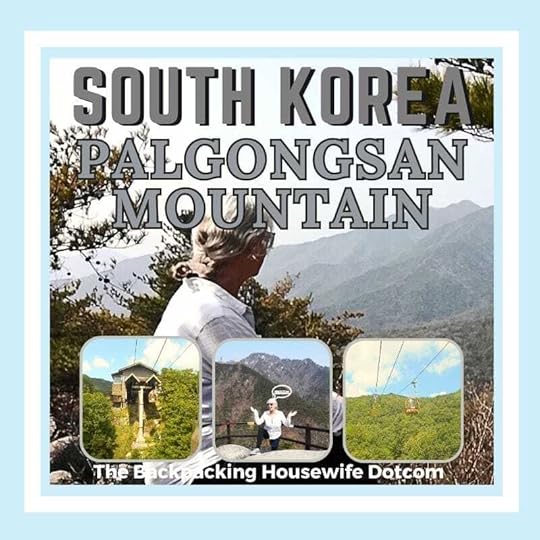 CLICK TO SEE MY FULL POST ON PALGONGSAN
CLICK TO SEE MY FULL POST ON PALGONGSAN7. Visit Duryu Park (두류공원)
My favourite spot in Daegu to see the blossoms in cherry blossom season. The 40-acre Duryu Park is a great place to wander and to relax but the park also offers many activities. Take a photo at the colourful Daegu sign. Duryu Park is right next door to E-World and The Daegu Tower!
See my full post on Duryu Park as it has so much to offer the visitor.
 CLICK TO READ MY FULL POST ON DURYU
CLICK TO READ MY FULL POST ON DURYU8. Have Fun at E-World (이월드)
For thrill-seekers and families, E-World is Daegu’s biggest amusement park. With roller coasters, rides, seasonal light shows, and themed festivals, it’s a fun way to spend a day. At night, the park comes alive with colourful illuminations, making it especially popular for couples. There are many spots to take photos for sharing with family and friends and the gram!
 E-World is Daegu’s biggest amusement park
E-World is Daegu’s biggest amusement park9. Admire the City from Daegu Tower (83 Tower, 83타워)
Located inside E-World, Daegu Tower (also known as 83 Tower) stands as the city’s most iconic landmark. Head up to the observation deck for panoramic views of Daegu by day or night. There’s also a revolving restaurant, a sky lounge, and seasonal exhibitions.
 Daegu Tower (also known as 83 Tower) is an iconic landmark
Daegu Tower (also known as 83 Tower) is an iconic landmark10. Experience Daegu’s Festivals
Time your visit with one of Daegu’s UNESCO music and cultural festivals. Daegu International Opera Festival (디에구 국제오페라축제) is a event focusing on opera performances. Jeongwol Daeboreum (대보름) festival is celebrated on the first full moon of the lunar calendar. Daegu Colorful Festival (대구 컬러풀 페스티벌) is a vibrant festival with street performances. There are also food and drink festivals. The Daegu Chimac Festival (대구 치맥 페스티벌) celebrating chicken and beer – draws crowds every summer in early July. While the Daegu Yangnyeongsi Herbal Medicine Festival showcases the city’s historic role in traditional Korean medicine.
 Colourful Daegu Sign at Duryu Park
SUGGESTED 2-DAY DAEGU ITINERARY
Day 1: Tradition & Culture
Colourful Daegu Sign at Duryu Park
SUGGESTED 2-DAY DAEGU ITINERARY
Day 1: Tradition & Culture
Morning: Visit Donghwasa Temple for history and peace.
Afternoon: Hike or take the cable car at Apsan Park.
Evening: Explore Seomun Market for dinner and the lively night market atmosphere.
Day 2: Modern Fun & City LifeMorning: Shop and explore Dongseongno Street.
Afternoon: Spend the day at E-World and go up Daegu Tower for city views.
Evening: Enjoy local food at Seomun or check if a festival is happening during your stay.
(If you have an extra day, add Palgongsan Mountain for hiking and temples).

THINGS YOU MIGHT LIKE TO KNOW ABOUT DAEGU Daegu is famously known as “Apple City,” as its climate is ideal for producing high-quality apples.Daegu lies in a basin surrounded by mountains in the Yeongnam region of South Korea. This unique topography makes Daegu very cold in winter and very hot and humid in summer – earning it the local nickname of ‘Daefrica’ – a play on Daegu plus Africa.Daegu’s summer heat is not just talk. In 2015 and again in 2023, viral reports and photos showed that Daegu’s intense summer temperatures caused traffic cones to melt.During the 1960s to 1980s, Daegu’s was known as a ‘textile capital’ and an economic powerhouse for South Korea’s fashion industries. This legacy is preserved in places like the Daegu Textile Museum.Daegu’s Seomun Market is the oldest and largest traditional market in Korea, with roots dating back to the Joseon period. It offers a massive selection of goods and delicious street food.Daegu is the hometown of famous K-pop stars and pop idols including Suga and V from BTS, along with other celebrities, like actress Song Hye-kyo.Daegu Tower – also known as The 83 Tower is an iconic symbol of Daegu and offers an incredible view of the entire city. The tower has 83 floors and has a revolving restaurant and Sky Lounge,Daegu is well-connected to Seoul, Busan, and other parts of the country by KTX high-speed rail, intercity buses, and a subway system.Daegu is a UNESCO City of Music, hosting several renowned festivals, including the Daegu International Opera Festival and the Daegu International Musical Festival.Daegu’s Jeongwol Daeboreum (대보름) festival is celebrated on the first full moon of the lunar calendar and involves burning a “daljib” (달집) of straw to ward off bad luck while stomping on the ground.Daegu has several universities and is known for its support for international students, offering scholarships and accommodations. Including Kyungpook National University and two highly regarded private universities, Keimyung University and Yeungnam University. Yeungnam University is also in Gyeongsan like Daegu University.

WHY DAEGU BELONGS ON YOUR SOUTH KOREAN ITINERARY
From vibrant markets and historic temples to mountain hikes, amusement parks, and the best city views at Daegu Tower, the city delivers a well-rounded experience that combines Korea’s past and present. Whether you’re here for one, two, or a few days, or using it as a base to explore the southeast, Daegu offers a unique slice of Korean culture you won’t want to miss.
Are you planning a trip to South Korea?
Have you ever visited Daegu?
Have I convinced you to add Daegu to your Korean Travel Itinerary?
LET ME KNOW – LEAVE A COMMENT BELOW!
THE BACKPACKING HOUSEWIFE RECOMMENDS TRAVEL INSURANCE
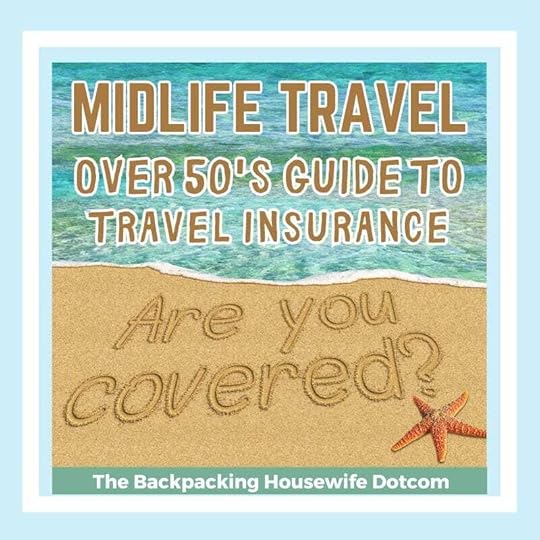 READ MY OVER 50’S GUIDE TO TRAVEL INSURANCE
READ MY OVER 50’S GUIDE TO TRAVEL INSURANCEThe post Daegu Itinerary appeared first on The Backpacking Housewife.
October 2, 2025
When is The Best and Worst Time to Visit Vietnam?
The best time to visit Vietnam – for a whole country experience – is between November and April.
But, in my opinion, to hone it down to the very best time to visit Vietnam that would be during March to April or later in the year during September and up to early in October
Alternately, the worst time to visit Vietnam – and so the months to avoid – would be from late October (when Central Vietnam’s typhoon season can wash out travel plans) and during December to January, when it is cold and damp in the north and along the central coast.
May through to August can be hot and ideal for the central region and its beautiful beaches, but the north is usually hot and stormy during this time while the south is in its full rainy season.
The above is of course a general summary as weather systems are becoming unpredictable.
To properly prepare for your trip to Vietnam and truly understand Vietnam’s expected weather patterns on a month by month basis do read on. In this post, I’ll give you a full explanation of not only the two differing monsoon weather systems that affect Vietnam month on month. I’ll also tell you which are the best months to visit Vietnam if you are looking to travel through the whole country in two or three weeks. See my travel tip below!
I’ll also relate to my own experiences of travel in Vietnam throughout the southern, central, and northern regions, and take a look at the best times to see Vietnam’s most popular tourist sites – together with dates of national holidays and the annual cultural festivals – that may effect and enrich your own visit to Vietnam.
MY VIETNAM TRAVEL TIPIf you have two to three weeks to visit Vietnam, I would suggest you plan a north-to-south route in March/April. I’d start in Hanoi and plan a day trip to Ninh Binh and also plan a couple of days to see Sapa or Cat Ba Island and to sail on Lan Ha and Ha Long Bay. Then travel down to the central region for Hue and to Danang and Hoi An. Then finish your tour of Vietnam in Ho Chi Minh City (Saigon) but taking a day out to sail on the Mekong Delta. Then, for some island time and sunshine and relaxation, head off to Phu Quoc.
 At The Reunification Palace Ho Chi Minh City
At The Reunification Palace Ho Chi Minh CityTABLE OF CONTENTS
When is The Best and Worst Time to Visit Vietnam?MY VIETNAM TRAVEL TIPMY OWN TRAVELS IN VIETNAMA QUICK LOOK AT THE WEATHER SYSTEMSSIMPLE REGIONAL SUMMARYWHEN IS THE BEST AND THE WORST TIME TO VISIT VIETNAMQUICK MONTH-BY-MONTH WEATHER SUMMARYMY VISIT TO VIETNAM’S CENTRAL REGIONMY VISIT TO VIETNAM’S SOUTHERN REGIONMY VISIT TO VIETNAM’S NORTHERN REGIONPOPULAR TOURIST SPOTS IN VIETNAM AT A GLANCETHE BEST TIME TO VISIT ALL OF VIETNAM IN ONE TRIPIDEAL MONTHS FOR A WHOLE-COUNTRY ITINERARYTIMES TO AVOID FOR A WHOLE-COUNTRY ITINERARYWEATHER PATTERNS IN THE SOUTH OF VIETNAMWEATHER PATTERNS IN THE CENTRAL REGION OF VIETNAMWEATHER PATTERNS IN THE NORTH OF VIETNAMWHEN IS THE BEST AND WORST TIME TO VISIT VIETNAM?NATIONAL PUBLIC HOLIDAY DATES IN VIETNAM MY OWN TRAVELS IN VIETNAMI’m currently planning my third visit to Vietnam – one of my very favourite countries in the world – but in my experience, planning a trip to Vietnam can be a little tricky. It’s tricky because it’s a very long country that stretches over a thousand miles (1650 km) from north to south and this means the seasonal weather isn’t the same everywhere and all at once.
Vietnam’s weather is shaped by two main monsoons – the northwest monsoon and the southwest monsoon – and that means the different regions can have opposite weather at the same time. For example, you might be basking in hot sunshine on a beach in the south of the country, but Hanoi and Ninh Binh and Sapa in the north could be very cold and wet and misty.
But it’s the central region can be especially tricky, weather wise, with the most dramatic swings in weather.
So, each time I’ve planned to visit Vietnam, I’ve first taken into account which the three main regions – The South, The Central Coast, and The North – that I wanted to visit because each region has very different weather systems.
 Statue of Ho Chi Minh in HCMC (Saigon)
A QUICK LOOK AT THE WEATHER SYSTEMS
Statue of Ho Chi Minh in HCMC (Saigon)
A QUICK LOOK AT THE WEATHER SYSTEMS
Northeast Monsoon (Nov to Mar):
Cool and dry winds from China make Northern Vietnam cool (it can get cold) and central and southern Vietnam dry and pleasant.
Southwest Monsoon (May to Oct):
Warm and wet winds from the Indian Ocean bring rainy season to most of the country and this means heavy downpours so it remains humid.
Transition months (Apr & Oct):
Weather is changing, can be mixed, often hot and humid.
 Cat Ba Island – Northern Vietnam
SIMPLE REGIONAL SUMMARY
Cat Ba Island – Northern Vietnam
SIMPLE REGIONAL SUMMARY
North (Hanoi, Ha Long, Sapa): The northern region enjoys four seasons with a cold winter, hot summer, nice spring/autumn.
Central (Hue, Da Nang, Hoi An, Nha Trang): The central region generally has very hot and dry summers. It’s stormy in autumn time. Winter and spring time temperatures are mild.
South (Saigon, Mekong Delta, Phu Quoc): In contrast, the south has just two seasons. It’s dry from Nov to April and wet from May to Oct.
 WHEN IS THE BEST AND THE WORST TIME TO VISIT VIETNAM
WHEN IS THE BEST AND THE WORST TIME TO VISIT VIETNAM
If you are still wondering when is the best and the worst time to visit specific regions in Vietnam – do read on – I will explain and share my own varied experiences of each of Vietnam’s main regions and what you can expect from expected weather patterns there month by month.
QUICK MONTH-BY-MONTH WEATHER SUMMARYJanuary – February: Great for the south, cool but damp in the north, rainy in central Vietnam.
March – April: Excellent for both the north and south; central region begins to dry up.
May – August: Best for beaches in the central region; rainy in the south; hot and stormy in the north.
September – November: Best time for the north; risky in the central region due to typhoons; wetter in the south.
December: Perfect for the south; chilly in the north; rainy in the central region.
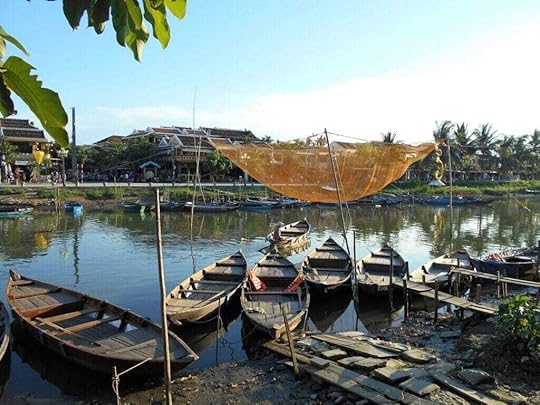 Boats on the river in Hoi An – Central Vietnam
MY VISIT TO VIETNAM’S CENTRAL REGION
Boats on the river in Hoi An – Central Vietnam
MY VISIT TO VIETNAM’S CENTRAL REGION
My very first visit to Vietnam was to the Central Region and during the blisteringly month of August. I flew into Danang Airport and wanted to visit the beautiful old town of Hoi An.
I also wanted to spend time relaxing at the nearby beaches of An Bang and Cua Dai.
I’ve travelled to many hot and tropical countries over the past few years, but I honestly thought that experiencing Hoi An in August was the hottest temperatures that I’d ever endured!
We (my dear late husband and I) stayed in a lovely small hotel with good aircon in the rooms and a small shaded swimming pool in the garden. I’m so glad we chose a hotel with a swimming pool while staying in Hoi An because, at the end of a day exploring and walking the busy streets, it was so wonderful nice to cool off by floating about in the pool.
 Night time on the river – Hoi An – Central Vietnam
MY VISIT TO VIETNAM’S SOUTHERN REGION
Night time on the river – Hoi An – Central Vietnam
MY VISIT TO VIETNAM’S SOUTHERN REGION
My second visit to Vietnam was to the Southern Region during early March when the weather was perfect for exploring Hoi Chi Minh City (Saigon) and for taking a river cruise on the Mekong and to experience the Floating Village. In the south the temperatures are constant 25 – 35 degrees Celsius (75-95 Fahrenheit ) throughout the year.
MY VISIT TO VIETNAM’S NORTHERN REGIONAfter being in the South for ten days, I then flew from HCMC to Haiphong in the Northern Region of Vietnam. Here I was looking forward to explore Cat Ba Island, Lan Ha and Ha Long Bay.
The weather was pleasantly warm in the north and I found it to be refreshingly cooler than the bustling heat of Ho Chi Minh City. I then travelled on towards the Central Region – by train and via the beautiful Hai Van Pass – to the Royal City of Hue.
This time, for my third visit to Vietnam, I’m planning to fly into Hanoi in the North during the month of April. I haven’t been to Hanoi before and, while I’m there, I’m looking forward to exploring the Old Town and also taking a day trip from Hanoi to visit Ninh Binh. I am also planning to take a few days to travel by train even further north to the mountainous area of Sapa.
 On the Mekong – Southern Vietnam
POPULAR TOURIST SPOTS IN VIETNAM AT A GLANCE
On the Mekong – Southern Vietnam
POPULAR TOURIST SPOTS IN VIETNAM AT A GLANCE
The South – Ho Chi Minh City, Mekong Delta, Phu Quoc Island
The Central Region – Hoi An, Da Nang, Hue, Nha Trang
The North – Hanoi, Halong Bay, Sapa, Ha Giang
 Lantern seller in Hoi An – Central Vietnam
THE BEST TIME TO VISIT ALL OF VIETNAM IN ONE TRIP
Lantern seller in Hoi An – Central Vietnam
THE BEST TIME TO VISIT ALL OF VIETNAM IN ONE TRIP
In travelling to the Northern Region in the month of April, I will be expecting the temperatures in Hanoi to be mild and (I’m hoping) that the air pollution for which the city is unfortunately renowned, will be lower than in the heat of the later months.
The mountain air in Sapa should be cool and hopefully dry and not too misty to obstruct the spectacular mountain views.
If your goal is to experience the North, Central, and South in a single journey, then you’ll certainly want to choose a time of year when conditions align across the whole country.
In Vietnam, while no month is flawless everywhere, some are much better than others.
So, to help you plan your itinerary for your own dream trip to Vietnam and to fully answer your question of When Is The Best and Worst Time To Visit Vietnam, here’s my month-by-month breakdown, my travel tips, and a deeper look at each regions expected weather patterns.
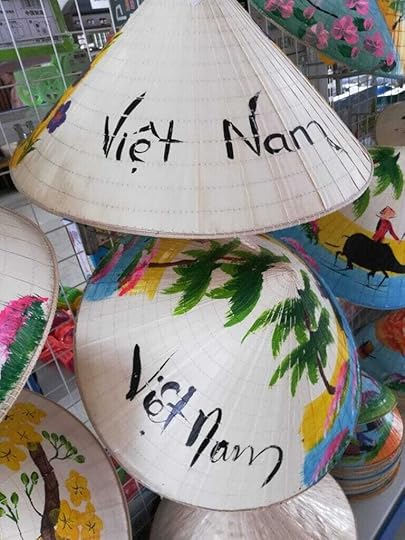 IDEAL MONTHS FOR A WHOLE-COUNTRY ITINERARY
IDEAL MONTHS FOR A WHOLE-COUNTRY ITINERARY
March to April
North: Spring blossoms, mild temperatures in Hanoi, and great trekking in Sapa.
Central: The rains ease off, beaches in Da Nang and Hoi An start shining.
South: Dry, sunny skies — perfect for Phu Quoc or cruising the Mekong.
Overall: A golden window with minimal weather issues across all regions.
September to Early October
North: Crisp autumn skies, golden rice terraces in Sapa and Ha Giang, perfect for Halong Bay.
Central: Still warm and sunny in early September, but by October, the risk of typhoons rises.
South: Rainy season tapering off, gradually improving toward November.
Overall: Excellent for northern highlights and culture-rich cities like Hanoi and Hue. Slightly riskier for the central coast.
TIMES TO AVOID FOR A WHOLE-COUNTRY ITINERARYOctober (especially mid–late October): Central Vietnam’s typhoon season can wash out travel plans.
December – January: Cold, damp north + rainy central coast = not ideal unless you only want southern sunshine.
May – August: Great for the central beaches, but the north is hot and stormy, and the south is in full rainy season.
 On the Mekong Delta – South Vietnam Region
WEATHER PATTERNS IN THE SOUTH OF VIETNAM
On the Mekong Delta – South Vietnam Region
WEATHER PATTERNS IN THE SOUTH OF VIETNAM
(Ho Chi Minh City, Mekong Delta, Phu Quoc)
Weather Patterns: The south is tropical year-round, with two clear seasons:
Dry season: December to April (sunny, hot, lower humidity)
Rainy season: May to November (afternoon downpours, humid, greener landscapes)
Best Time to Visit
December – April: This is perfect for exploring Ho Chi Minh City’s energy, cruising the Mekong Delta, or unwinding on the beaches of Phu Quoc. Expect clear skies and lots of sunshine.
Tougher Months
May – September: Frequent rain showers, especially in the afternoons. It doesn’t usually ruin your day, but beach lovers may find it less ideal.
October: Peak rainfall and occasional flooding make this the least convenient and worst time to visit the south.
 Fruit sellers in Hoi An – Central Vietnam
WEATHER PATTERNS IN THE CENTRAL REGION OF VIETNAM
Fruit sellers in Hoi An – Central Vietnam
WEATHER PATTERNS IN THE CENTRAL REGION OF VIETNAM
(Hoi An, Da Nang, Hue, Nha Trang)
Weather Patterns: Central Vietnam has the most dramatic swings in weather:
Dry season: February to August (sunny, hot, beach-friendly)
Rainy/typhoon season: September to January (heavy rain, storms possible)
Best Time to Visit
February – August: Excellent for strolling through the lantern-lit streets of Hoi An, exploring imperial history in Hue, or beach hopping in Da Nang and Nha Trang.
Tougher Months
September – November: The central coast can be hit by typhoons, especially around Hue and Hoi An. Roads sometimes flood, and outdoor activities can be disrupted.
December – January: Rain continues, though less intense. Still not the best for beach trips.
WEATHER PATTERNS IN THE NORTH OF VIETNAM(Hanoi, Halong Bay, Sapa, Ha Giang)
Weather Patterns: The north has four distinct seasons, making it feel very different from the rest of the country:
Spring (March – April): Mild, misty, pleasant.
Summer (May – August): Hot, humid, heavy rains.
Autumn (September – November): Crisp, cool, beautiful skies.
Winter (December – February): Cold, especially in the mountains.
Best Time to Visit
September – November: Arguably the most beautiful time of year. Hanoi enjoys blue skies, Halong Bay sparkles, and trekking in Sapa or Ha Giang is at its best with golden rice terraces.
March – April: Another lovely window, with comfortable temperatures and blooming flowers.
Tougher Months
May – August: High humidity, heavy rain, and the risk of tropical storms in Halong Bay.
December – January: It can be surprisingly cold in Hanoi and downright freezing in Sapa. If you weren’t expecting winter coats, it might not be ideal.
WHEN IS THE BEST AND WORST TIME TO VISIT VIETNAM?Best Overall Months: March – April and September – November give you the best balance if you want to see multiple regions.
Best for Beach Lovers: May – August (central coast).
Worst Times: October in the central region (typhoons) and December – January in the north (cold and grey).
If you’re planning a trip across all three regions, it’s almost impossible to get ‘perfect’ weather everywhere at once. Decide what matters to you the most – is it the beaches, the countryside and trekking opportunities, or city exploring. Plan your trip by your personal priorities.
Month-by-month chart showing the best and worst times to visit Vietnam by region.
 NATIONAL PUBLIC HOLIDAY DATES IN VIETNAM
NATIONAL PUBLIC HOLIDAY DATES IN VIETNAM
Depending on your views about national holidays, festivals, and cultural celebrations – a time to visit or a reason to avoid – these are the usual times of year for the most important of Vietnam’s national holidays and celebrations.
On national public holidays in Vietnam, many government offices, banks, and some services may close. Private businesses and tourist facilities may remain open but with reduced hours.
Major Festivals, Cultural & Religious Events
These are not always public holidays, but many of them are deeply important, lively, and regionally significant. As a tourist, attending them can be a highlight or occasionally a challenge due to crowds, closures, or transport bottlenecks.
In the following month by month list of Vietnam Holidays & Festivals I have shown the dates for 2025 as an example – but please note – that dates of lunar-calendar events shift each year.
Always check the dates of these holidays for the specific year that you plan to travel.
January
1 Jan – New Year’s Day (Tết Dương Lịch)
28 Jan – 3 Feb – Tết (Vietnamese Lunar New Year, multi-day public holiday)
February
10 Feb – Tết Nguyên Tiêu (First Full Moon Festival)
10 – 11 Feb – Lim Festival (Bắc Ninh, Quan Họ folk singing)
Feb – May – Perfume Pagoda Festival (pilgrimage season in Hanoi area)
March
8 Mar – International Women’s Day
31 Mar – Tết Hàn Thực (Cold Food Festival)
31 Mar – 5 Apr – Phủ Dầy Festival (Nam Định province, goddess worship)
April
4 Apr – Thanh Minh Festival (Tomb-sweeping Day)
7 Apr – Hùng Kings’ Commemoration Day (public holiday)
14 – 16 Apr – Chol Chnam Thmay (Khmer New Year, southern Khmer communities)
30 Apr – Reunification / Liberation Day (public holiday)
May
1 May – International Labor Day (public holiday)
5 May (lunar 5th month) – Tết Đoan Ngọ (Mid-year Festival/Pestilence-warding Day)
5 – 12 May – Vesak (Buddha’s Birthday, observed at temples)
June
Ongoing — Perfume Pagoda Festival continues until early June
June – July – Da Nang International Fireworks Festival (dates vary/weekends)
July
8 Jul (15th day of 6th lunar month) – Vu Lan Festival (Wandering Souls/Ghost Festival)
September
2 Sep – National Day (public holiday)
6 Sep – Mid-Autumn Festival (Tết Trung Thu)
October
20 Oct – Vietnamese Women’s Day
November
20 Nov – Vietnamese Teachers’ Day
December
24 Dec – Christmas Eve (widely celebrated, not an official holiday)
25 Dec – Christmas Day (Christian communities, festive in major cities)
I hope both my summary and full explanation of Vietnam’s complicated weather patterns has helped you to plan your own trip to Vietnam.
It is tricky to plan a trip that will encompass the whole country unless you do plan carefully.
Because the fact that the country geographical is very long and coastal and is affected by two different and opposing monsoon systems – that can at certain times of year and under certain condition bring dangerous folding and typhoons – really do make it prudent to plan properly.
Have you visited Vietnam?
Are you planning to visit?
What month are you favouring and to which region/s?
Has this post been helpful to you?
the backpacking housewife recommends travel insurance
 READ MY GUIDE TO TRAVEL INSURANCE
READ MY GUIDE TO TRAVEL INSURANCEThe post When is The Best and Worst Time to Visit Vietnam? appeared first on The Backpacking Housewife.
September 19, 2025
Travel Planning – Free Spirit or Group Guru?
Despite the allure of independent travel, I believe group travel and organised adventures with travel groups can be a smart, stress-free alternative to travel, especially in unfamiliar or logistically challenging regions, like remote national parks or places where language barriers could hinder your experience.
I also believe that while independent travel empowers – guided tours enrich – but as there’s no one-size-fits-all answer to how you travel, the best approach depends on your destination, time, and comfort level.
And, in the end, the right choice is the one that makes you most excited to pack your bags and go!
Right now, I’m travel planning again and it feels exciting – if a little daunting because I’m now without the help of my beloved backpacking husband – now my heavenly husband. First and foremost, I need to apply for a new passport.
Every entry and exit stamp in my old passport is a now precious memory for which I’m profoundly grateful.
It feels right and it feels poignant that as I start to plan to travel again – as I promised my darling husband I would – that I have a new passport to symbolise my fresh start. I’m not religious person but I am spiritual and so I do believe he is with me, watching over me, guiding me, and forever in my heart because our love will never die.
So, while I’ve been waiting for my new passport to arrive, I’ve been doing research into destinations and flights and accommodations for an extended trip early in 2026 to Asia, and to include Malaysia, Vietnam, Japan, and South Korea (to visit my son as he and his family live in South Korea).
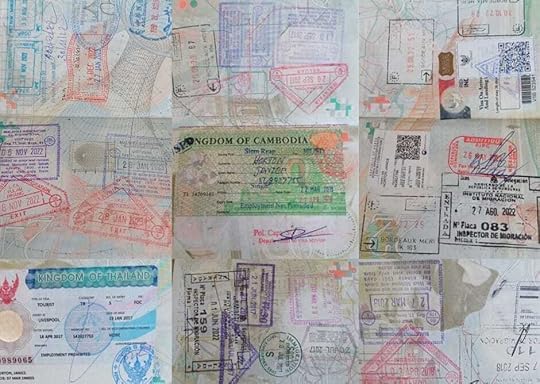 Every entry and exit stamp in my old passport is a now precious memory
Every entry and exit stamp in my old passport is a now precious memoryTABLE OF CONTENTS
The Art of Travel: Going It Alone vs aN Organised TourIndependent Travel vs. Group TravelIndependent Travel vs. Group Travel: Pros & Cons ChecklistWhich Travel Style Suits You Best?The Best of Both WorldsMixing Group and Independent TravelFrequently Asked Questions About Group Travel for Over 50sMy Thoughts on Independent vs Group Travel MY TRAVEL PLANSAnd, although I expected that I’d be travelling solo this time, I’m delighted to tell you that my lifelong and best friend, Dina, is now joining me on this upcoming trip to Asia, so I will have a travel companion!
Dina and I know each other well. We were actually born right next door to each other (although I’m a year older) and our mothers had also good friends. My mum helped to deliver Dina, as she was born a few days before Christmas and in a snowstorm, which delayed the midwife getting there on her bicycle – as that was how a midwife travelled back in the 1960’s!
For many travellers, myself included, planning an independent trip is half the adventure. Mapping out routes and planning your itinerary, finding flights, trying to keep on budget, hunting down hidden gems of destinations, and booking your accommodation, and choosing your own pace of travel. It all adds up to a feeling of freedom that’s hard to beat.
But what if you don’t enjoy making all your own travel arrangements?
What if you find travel planning stressful?
I have over ten years of experience of independent travel planning, but once I get started on booking flights and booking hotels I really need to keep my stress in check by creating a detailed spreadsheet, so I don’t get confused and lose track of important information, flights, e-tickets, visas, reservations, and expenses.
So, while I can appreciate that DIY travel offers freedom and flexibility, it’s not always the best route for everyone, especially when navigating complex destinations or time-sensitive itineraries.

MY ADVICE: Travel in midlife and retirement should be about freedom and fun and enjoyment not stress. If you find making travel plans and travel arrangements tricky and stressful I can advise on one or two things to make travel planning more enjoyable.
Firstly, check out all my Travel Planning posts here on my website for practical travel tips and destination inspiration AND if you are a woman and over age fifty then why not become a member of my Facebook travel planning group for planning holidays for couples, groups, and singles over 50 – Women 50+ Unfolding Travel – Unfolding A New Chapter Of You!
And, when travel planning feels too overwhelming why not opt for a guided tour experience instead and let someone else handle the logistics, so that you can focus on enjoying the journey? Especially when local guides can often unlock experiences you’d never find on your own like home-cooked meals to off-the-map sites.
Right now, for later in 2025 and 2026, as well as independently travel planning, I’m also looking at all the exciting tours and holidays for over 50s offered by an organised travel tour company called TourRadar, who offer the world’s largest selection of multi-day organised adventures worldwide and who are rated ‘Excellent’ on Trustpilot.
Right now they have a Mega Sale of group trips with up to 70% off thousands of tours worldwide!
 Check out the fabulous TourRadar Mega Sale!
Check out the fabulous TourRadar Mega Sale!For later in the year, I’m looking at trips and tours to Iceland in search of Northern Lights and to Egypt for the opening of the Grand Egyptian Museum. I’m also interested in a bucket list trip to India for a tour of The Golden Triangle!
There are so many places where opting for an adults guided tour experience makes the most sense!
Indeed, despite the allure of independent travel vacations, I believe organised adventures with travel groups can be a smart, stress-free alternative – especially in unfamiliar or logistically challenging regions – think remote national parks or places where language barriers could hinder your experience.
I also believe that while independent travel empowers – guided tours enrich – but that there’s no one-size-fits-all answer to how you travel. The best approach depends on your destination, time, and comfort level. And, in the end, the right choice is the one that makes you most excited to pack your bags and go!
 Independent Travel vs. Group Travel
Independent Travel vs. Group Travel
Deciding how to travel in midlife or retirement often comes down to one big question: Do you want to plan and explore independently, or join a group where everything is arranged for you? Both options have their perks and challenges.
Here’s a quick comparison of ‘pros’ and ‘cons’ to help you choose:
Independent Travel vs. Group Travel: Pros & Cons Checklist Which Travel Style Suits You Best?
Which Travel Style Suits You Best?
There’s no one-size-fits-all answer. The beauty of traveling in midlife and retirement is that you can choose the style that matches your mood, energy, and goals for each trip. Whether you go solo or with a group, the world is waiting and every journey has something valuable to offer.
Independent Travel is ideal if you love freedom, want to explore off the beaten path and don’t mind handling the details yourself.
Group Travel is a great fit if you prefer convenience, enjoy sharing experiences, and value the safety and guidance of traveling with others.
 Guided adventures can be a smart stress-free alternative to travelThe Best of Both Worlds
Mixing Group and Independent Travel
Guided adventures can be a smart stress-free alternative to travelThe Best of Both Worlds
Mixing Group and Independent Travel
My own choice and that of many travellers in midlife or retirement are finding that a blended approach works best.
This can mean booking city breaks and less challenging destinations independently and then choose a group tour for structure and for companionship. It’s even possible to perhaps tag on a few independently planned days at the start or at the end of the guided trip for personal exploration. I like this approach for boosting one’s confidence.
Here are a few ways to create this hybrid “best of both worlds” travel style:
1. Use Group Travel as a “Confidence Booster”
This way of travel appeals to me as a newbie solo traveller. If it’s been a while since you’ve travelled, or if solo travel feels daunting, group tours are a great way to ease back in. After building confidence, you may feel more comfortable adding independent legs to your journeys.
2. Start with a Group Tour Then Add Independent Days
Joining a group tour at the beginning of your trip gives you the comfort of a guide, travel companions, and organized logistics. Once the tour ends, stay a few extra days to explore on your own at your own pace.
Example: Take a 7-day guided tour through Italy’s highlights then spend three extra nights in Florence wandering museums and cafés at leisure.
3. Mix and Match Destinations
Choose group travel for places that feel more complex – like countries with language barriers or tricky transportation. For easier-to-navigate spots, go independently.
Example: Book with platinum tour operator G Adventurers and take a group tour in Morocco then add a solo city break in London or Paris.
4. Short Group Excursions Within Independent Trips
Even if you’re mostly traveling on your own, you can join a day tour or short 2–3 day group excursion. This adds companionship, local expertise, and variety without committing to a full package.
Example: Take a trip to Spain – add a guided trip to Andalusia – and perhaps a tag on small-group wine tour.
4. Travel with Friends or Family in a Small Group Tour
For retirees traveling with friends, consider a small-group package where you still get a guide and itinerary, but the atmosphere feels more personal and flexible.
Example: A river cruise with a small-group where you can enjoy organized activities but still have free time together.
5. Use Group Travel as a “Confidence Booster”
This way of travel appeals to me as a newbie solo traveller. If it’s been a while since you’ve travelled, or if solo travel feels daunting, group tours are a great way to ease back in. After building confidence, you may feel more comfortable adding independent legs to your journeys.
 Excited to be flying from London Heathrow
Frequently Asked Questions About Group Travel for Over 50s
Excited to be flying from London Heathrow
Frequently Asked Questions About Group Travel for Over 50s
1. What are the best group tours for midlife and seniors?
Some of the most popular options include guided tours in Europe, river cruises, cultural trips through Asia, and small-group adventure tours tailored for mature travellers. Many companies design itineraries specifically for people 50+ with a balance of comfort and activity. TourRadar is a platform to compare small group tours for over 50’s and find tours that match your interests.
2. Is group travel safe for midlife and senior travellers?
Yes, group travel is one of the safest ways to see the world. You’ll have the support of a professional guide, travel companions, and organized transportation, which reduces risks when exploring new destinations.
3. Can I join a group tour if I’m traveling solo?
Absolutely! Many solo travellers choose group tours for the companionship and sense of community. Some companies like G Adventures booked through TourRadar offer solo-ish or solo-friendly travel group options with no or low single supplements.
4. Are group tours too fast-paced for older travellers?
Not at all. Many group tours are designed with pacing in mind, allowing for free time and rest. You can choose tours based on your comfort level, from leisurely cultural trips to more active adventures.
5. Why choose group travel in retirement?
Group travel takes the stress out of planning, ensures safety, and provides companionship. It’s a great way to tick destinations off your bucket list while making new friends along the way. Travel in midlife and retirement is about more than just seeing new places – it’s about experiencing them fully, without the worries of planning or traveling alone.
Group travel for seniors and over-50 adventurers – like this Grand Tour of Europe offered by platinum operator Trafalgar through TourRadar offers companionship, expert guidance, and the chance to build memories that last a lifetime. If you’ve been dreaming about your next adventure, now might be the perfect time to join a group tour.
The world is waiting and it’s even better when shared!
 Enjoying Venice!
My Thoughts on Independent vs Group Travel
Enjoying Venice!
My Thoughts on Independent vs Group Travel
If you are lucky enough to have reasonable health and mobility in midlife and in retirement then travel and adventure doesn’t need to be an impossible dream. In fact, for many of us, it’s just beginning because midlife and retirement opens up the freedom to explore without the constraints of busy work schedules or family responsibilities.
So, whether you’ve always dreamed of strolling through European cities, discovering hidden gems in Asia, or cruising along scenic coastlines, now is the time to make it happen.
But if planning every detail of a trip feels daunting, or you’d rather not travel alone, group travel could be the answer.
The best group tours for over 50s and retirees combine ease, companionship, and unforgettable experiences, making your journey more rewarding than ever.
Travel in midlife and retirement should be about freedom and fun and enjoyment not stress.
By blending group and independent travel, you get the security, friendships, and insights of guided tours along with the freedom and flexibility of exploring on your own. Think of it as designing your own perfect recipe for adventure: a little structure, a little spontaneity, and a lot of unforgettable memories!
Are you planning a trip?
What is your ideal way to travel?
Are you and indie or a group travel fan?
Let me know. Leave a comment below!
 Read my post and recommendations on Travel Insurance for Over 50’s
Read my post and recommendations on Travel Insurance for Over 50’s
The post Travel Planning – Free Spirit or Group Guru? appeared first on The Backpacking Housewife.
September 10, 2025
The Ultimate Guide to Over 50’s Hotel Breaks
I recently took a late summer midweek break to Dorset, a county on the south coast of England known as The Jurassic Coast. The Dorset coastline is a World Heritage Site. It’s incredibly beautiful and famed for its unique rock formations and fossils and for its breathtaking landmarks like Kimmeridge Bay, Lulworth Cove, Durdle Door, Old Harry Rocks, and Chesil Beach.
I was lucky to get five days of dry sunny weather while in Dorset and it was wonderful to visit the seaside towns of Weymouth and Poole and take long walks along the high coastal paths and down steep tracks to the golden beaches and to stop to wistfully look out to sea towards the Isle of Wight and then across the English Channel towards France.
I found that in my 50’s and certainly now I’m a few years into my 60’s, one of my greatest joys is the freedom to travel with more flexibility and with a clear sense of what makes me happy. So, I want to share with you how, if you too value the freedom and flexibility to travel more now, how for the over 50’s hotel breaks can be the perfect way to recharge, explore, or to simply enjoy a change of scenery in midlife and in retirement.
Whether you love a cosy countryside retreat, a chic city adventure, or a luxurious wellness escape, there’s a hotel break and a destination to match your mood and your style.
You can find over 50s hotel breaks and hotel deals through specialist providers and tour companies like TourRadar and many have senior specific and solo packages. Some, like those offered by the National Trust offer truly unique accommodations.
Indeed, I’ve found that many tour providers like TourRadar offer exciting guided adventures for solos, duos, couples, or groups, and prices include the benefit having your hotel accommodation, your organised sightseeing excursions, and all your travel arrangements done for you. I think that sounds perfectly wonderful!
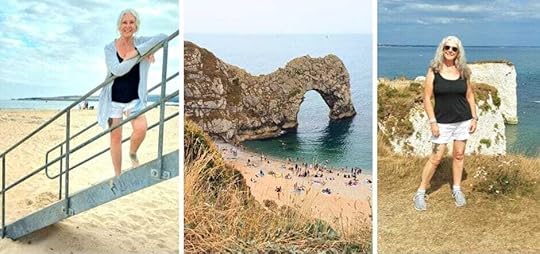 I recently took a late summer break to Dorset – a county on the south coast of England
I recently took a late summer break to Dorset – a county on the south coast of England Over 50’s Hotel Breaks for Culture, Coast, Cities and CountrysideHOW LONG SHOULD AN OVER 50’S HOTEL BREAK BE?HIDDEN GEMS OF HOTEL BREAKSFULLY GUIDED TOURSMY TOP 10 BEST OVER 50’S HOTEL BREAKSBOOKING TIPS FOR OVER 50’S HOTEL BREAKSTRAVEL TIPS FOR OVER 50’S HOTEL BREAKSLUXURY, DISCOVERY, AND RELAXATION
HOW LONG SHOULD AN OVER 50’S HOTEL BREAK BE?
Over 50’s Hotel Breaks for Culture, Coast, Cities and CountrysideHOW LONG SHOULD AN OVER 50’S HOTEL BREAK BE?HIDDEN GEMS OF HOTEL BREAKSFULLY GUIDED TOURSMY TOP 10 BEST OVER 50’S HOTEL BREAKSBOOKING TIPS FOR OVER 50’S HOTEL BREAKSTRAVEL TIPS FOR OVER 50’S HOTEL BREAKSLUXURY, DISCOVERY, AND RELAXATION
HOW LONG SHOULD AN OVER 50’S HOTEL BREAK BE?
2 – 3 Nights: A refreshing long weekend—ideal for spa indulgence, a cultural city trip, or a quick coastal getaway.
4 – 7 Nights: Long enough to combine relaxation with exploration, such as a scenic countryside hotel with day trips nearby.
7 + Nights: Best for fully unwinding – think sun-drenched resorts, wellness retreats, or combining multiple destinations.
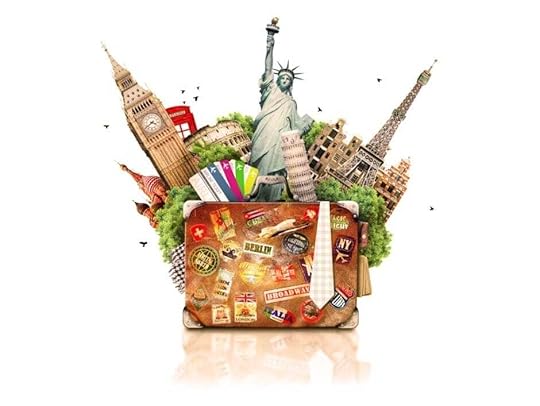 HIDDEN GEMS OF HOTEL BREAKS
Spa & Wellness Escapes
HIDDEN GEMS OF HOTEL BREAKS
Spa & Wellness EscapesMidlife is the perfect time to put wellbeing first. Spa hotels offer soothing treatments, thermal pools, and yoga or pilates classes – perfect for de-stressing.
Hidden Gems: Budapest, Hungary – is famous for its thermal spas and baths, steam rooms, saunas and plunge pools. There are many city centre heritage and riverside hotels that combine culture and wellness. Try Kozmo Hotel Suites & Spa – Small Luxury Hotels of the World or The Queen’s Court Hotel & Residence.
Countryside RetreatsCountry house hotels or rural lodges provide peaceful settings, beautiful walking trails, and plenty of fresh air. Ideal for those who love a slower pace.
Hidden Gems: Yorkshire Dales, UK (stone villages and cosy inns) Look at the quaint and historic Street Head Inn which is close to the Yorkshire dales National Park or the beautiful Garni Hotel Berc at Lake Bohinj, Slovenia (a serene Alpine lake less touristy than Bled).
 Hidden Gems in The Yorkshire Dales UKCultural City Breaks
Hidden Gems in The Yorkshire Dales UKCultural City BreaksCities make wonderful playgrounds for curious travellers. A centrally located hotel lets you explore galleries, architecture, and vibrant café culture at your own pace.
Hidden Gems: Ghent, Belgium (a charming medieval city without the Bruges crowds) where you’ll find the historical boutique hotel elegantly with antique furniture 1898 The Post (during this festive period the Christmas market is only a few metres away). Or why not consider Lucca, Italy (a walled Tuscan gem perfect for walking and cycling) and the Alla Corte degli Angeli Hotel – a warm and friendly hotel within the ancient walls of Lucca and a 10-minute walk from the cathedral.
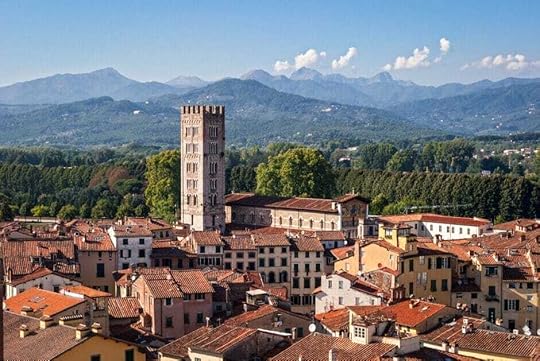 Stay at a warm and friendly hotel within the ancient walls of Lucca, ItalySeaside Hotels
Stay at a warm and friendly hotel within the ancient walls of Lucca, ItalySeaside HotelsFew things are more rejuvenating than the sound of waves. Seaside hotels are perfect for restorative strolls, seafood feasts, and gentle coastal adventures.
Hidden Gems: Menorca, Spain (quieter than Mallorca, with unspoilt beaches) and Hotel Torralbenc, a Small Luxury Hotel of the World located in the small town of Alaior and just a 10-minute drive from Menorca airport. Or if a wild and rugged coastline and a colourful harbour is more your thing why not head to Pembrokeshire, Wales and stay at Penally Abbey Country House Hotel and Restaurant – a period house with views across Carmarthen Bay.
 Alaior in Menorca, SpainAll-Inclusive Relaxation
Alaior in Menorca, SpainAll-Inclusive RelaxationFor stress-free comfort, an all-inclusive hotel break ensures everything is taken care of – meals, entertainment, and sometimes even wellness programmes.
Hidden Gem: Elissa Lifestyle Beach Resort – Adults Only – is on a prime private beachfront location in Kallithea, Rhodes. Guests enjoy sea views, a seasonal outdoor swimming pool, and a lush garden. The resort serves Greek, Mediterranean, and seafood cuisines at its restaurants and a Champagne list including Veuve Clicquot.
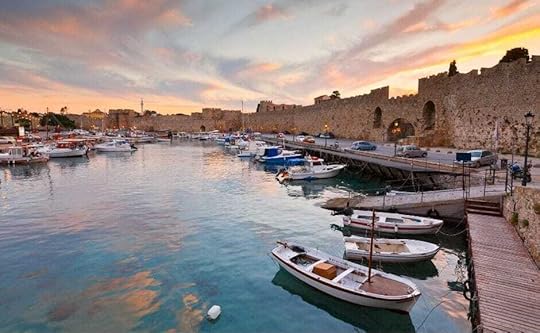 Old Town and Harbour Rhodes, GreeceCoastal Hotels
Old Town and Harbour Rhodes, GreeceCoastal HotelsA coastal hotel offers the perfect escape for relaxation and rejuvenation. With stunning sea views, fresh ocean air, and the soothing sound of waves. Enjoy leisurely walks along the beach, breathtaking sunsets, and fresh seafood dining, all just steps from your room.
Hidden Gem: Madeira, Portugal – the “island of eternal spring,” where The Cliff Bay PortoBay – situated atop a natural peninsula – provides panoramic Atlantic Ocean views and private sea access alongside coastal walks and subtropical gardens.
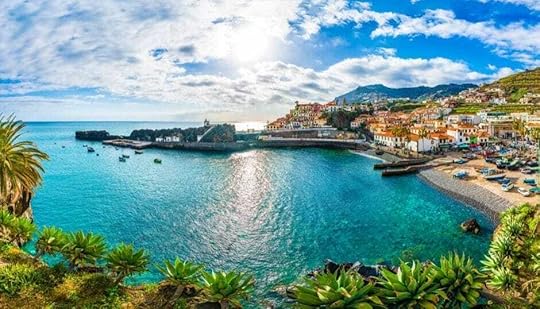 Hidden Gem: Madeira, Portugal
FULLY GUIDED TOURS
Hidden Gem: Madeira, Portugal
FULLY GUIDED TOURS
And I love the idea of tours that offer the opportunity to travel on a fully guided adventure with like-minded people in a more “grown-up” atmosphere in our golden years. Coach holidays with packages to destinations across the UK and Europe, are a good option for those who prefer not to fly or to drive. Why not consider a fully guided tour of Essential Britain and Ireland – starting and finishing in London – with a platinum operator through TourRadar (quote JaniceH50 for extra discounts).
 My favourite hotel and restaurant in the whole world!
MY TOP 10 BEST OVER 50’S HOTEL BREAKS
My favourite hotel and restaurant in the whole world!
MY TOP 10 BEST OVER 50’S HOTEL BREAKS
For quick inspiration here’s my hand-picked list of hotel break ideas that balance relaxation, culture, and comfort – and in my opinion – are all especially perfect for midlife and senior travellers. Plus I reveal my own favourite hotel in the whole world!
1. SCOTLAND UK – Luxury in Edinburgh: My favourite hotel in the whole world has to be The Witchery by the Castle in Edinburgh. I’ve been lucky enough to stay the night in this historical gem a couple of times (they have only nine stunningly unique suites) and their Secret Garden is my favourite restaurant. Check availability here.
2. ENGLAND UK – Serenity in the Cotswolds: Located in a quintessentially English village and in the heart of The Cotswolds, The Lygon Arms is a former coaching inn dating back to the 1300s surrounded by rolling hills, afternoon teas, and easy village walks. Expect log fires, signature cocktails, a relaxing spa, and glorious guestrooms including the famous Charles I suite. Check availability here.
3. SPAIN – Calm in Menorca: Swap the bustle of Mallorca for a boutique beachfront hotel in Menorca and stay at a world-class elegant townhouse in central Mahón, just 200 metres from Mahón Harbour, at Can Alberti Boutique Hotel. Built in 1740, Casa Albertí is less than 5km away from Menorca airport so perfect for a weekend getaway! Check availability here.
4. PORTUGAL – Wine & Wellness: Stay in a vineyard hotel, sip fine wines, and explore the olive-grove landscapes at a slower pace. A former Royal Residence, The Convento do Espinheiro Historic Hotel & Spa, is a luxurious hotel in Évora – -classified by UNESCO as a World Heritage City – and is an exceptional part of the region’s wine route. Check availability here.
5. CZECH REPUBLIC – Romantic Break or Memorable Weekend in Prague: The Grand Mark Prague is in a lovingly restored 17th-century baroque residential palace in the heart of Prague and creates an aura of luxury, artfully blending classical design with modern art. Located just a five minute walk to the old town. Check availability here.
6. CROATIA – A Tranquil Authentic Croatian Escape in Pucisca: Get away from the hustle of more crowded tourist spots and visit the historic ‘Port of Towers’ that once served to protect the island from pirate and Ottoman raids. Puteus Palace Heritage Hotel in Pucisca offers a 5-star experience within a historic building. The hotel is 14 km from Brac Airport and just a five minute walk from Macel Beach. Check availability here.
7. ITALY – Art & Elegance in Florence: A city hotel close to museums, Tuscan cuisine, and a slower rhythm ideal for cultural explorers. The Tivoli Palazzo Gaddi Firenze Hotel is housed in the Renaissance Palazzo Gaddi, dating back to 1596 and boasts traditional Florentine Baroque halls. Its seasonal rooftop terrace offers spectacular city views. Check availability here.
8. FRANCE – Romantic Stay in Paris: Le Bristol Paris is an icon of French elegance and art de vivre on one of the city’s most prestigious addresses on rue du Faubourg Saint-Honoré. The hotel is a brief walk from a handful of other iconic palaces, most notably the Élysée, the Grand Palais and the Louvre. Check availability here.
9. GERMANY – Legendary Luxury in Berlin: the sophisticated Hotel Adlon Kempinski allows direct access to some of Berlin’s main landmarks. The Holocaust Memorial, Checkpoint Charlie, and Pariser Platz, are all within a 10-minute walk. Check availability here.
10. SWITZERLAND – An Elegant and Distinguished Ambiance: On a hill overlooking the beautiful town of Gstaad, The Gstaad Palace offers a breathtaking view of the majestic Swiss Alps. Built in 1913 the Gstaad Palace has earned an unrivalled reputation for discreet, refined hospitality and is the secret hotel getaway for many celebrities. Check availability here.
BOOKING TIPS FOR OVER 50’S HOTEL BREAKSCompare package deals (flight with hotel) against separate bookings and you might save money.
Look for senior discounts (many hotel chains and tour operators offer them quietly).
Use hotel loyalty schemes as in my experience points add up quickly and can often equate to free stays and room upgrades and free breakfasts!
Book off-peak and in shoulder seasons (April – June and September – October in the UK and Europe) for better weather, smaller crowds, and lower prices.
 TRAVEL TIPS FOR OVER 50’S HOTEL BREAKS
TRAVEL TIPS FOR OVER 50’S HOTEL BREAKS
Pick the right location: Stay close to attractions or transport hubs to reduce long transfers.
Prioritise comfort: Spacious rooms, elevators, and on-site dining make travel more enjoyable.
Stay flexible: Plan downtime between activities—relaxation is part of the holiday – for golden years breaks.
Add insurance: Always have comprehensive cover, especially abroad.
Seek extras: Look for hotels that include afternoon teas, excursions, or spa credits.
LUXURY, DISCOVERY, AND RELAXATIONHotel breaks in your 50s, 60s, and beyond are about balance – and for me that means a touch of luxury, a dose of discovery, and plenty of time to relax. The beauty of a hotel stay is that you can tailor it to your mood – whether that’s a weekend of pampering, a cultural deep dive, or a lazy week in the sunshine.
And remember – the most memorable trips aren’t always in the busiest destinations. Sometimes it’s the hidden gems and the quiet seaside towns, tucked-away countryside retreats, or smaller historic cities, that offer the richest rewards.
After all, the best breaks aren’t about how far you go but how great you feel when you get back!
Are you a fan of hotel breaks?
How often do you go?
Where do you love best?
Would you share your hidden gems!?
 Check out the fantastic deals for over 50’s hotel breaks with TourRadar!
Check out the fantastic deals for over 50’s hotel breaks with TourRadar!The post The Ultimate Guide to Over 50’s Hotel Breaks appeared first on The Backpacking Housewife.
September 9, 2025
Over 50’s Guide To Staying Safe While You Travel
Whether you’re ticking off your travel bucket list in retirement or simply enjoying the freedom to explore, traveling should be about adventure and not anxiety, and that’s why I take personal and financial security seriously when I’m planning my travels.
I sometimes feel, as more mature travellers, we often carry more personal data than younger travellers and that we have more assets to protect. Sensitive documents like passports, driver’s licenses, medical cards, and multiple credit or debit cards.
And often, while travelling through airports, train stations, and staying in hotels, public Wi-Fi is the only way to stay connected. Yet, using public Wi-Fi can make me feel vulnerable as I fear it could be a hacker’s playground, especially when we’re out of our usual routine, tired, jetlagged, which can also mean more we’re more likely to fall for unfamiliar scams or phishing attempts.
Examples of identity theft cases and famous identity theft cases are frequently in the news and it is being reported that mature travellers are particularly vulnerable to identity theft. Combine that with the challenges of navigating unfamiliar places and technology and you’ve got a perfect storm for identity thieves.
It seems the world might be more open than ever but so are the risks.
STAYING SAFE WHILE SEEING THE WORLD“Your identity is as valuable as your passport – protect it before you go”
Identity theft is a growing concern that’s often overlooked until it’s too late. A simple mistake, like logging into your email on public Wi-Fi or losing your wallet in a foreign country, can quickly spiral into a stressful, costly ordeal.
If identity theft occurs while you’re abroad, recovering your identity can be incredibly difficult without local support and that’s why I would advocate using enhanced identity theft protection like NordProtect which can help keep your personal information safe while you’re happily making memories all around the world.
NordProtect offers the kind of peace of mind you can’t pack in your suitcase but absolutely need when you’re far from home.
With constant monitoring, real-time alerts, expert recovery assistance, and financial coverage, NordProtect ensures you can enjoy your journey with confidence. Your identity is just as valuable as your passport – so protect it before you go.
In this post, I’ve teamed up with NordProtect (and got you an exclusive discount – see below) to look at why identity theft protection is a must for travellers over 50. NordProtect’s features are designed to provide everything you need to keep your identity safe.
Note: This post is for my US audience as NordProtect is available to US customers only.
 NordProtect – an identity theft protection service you can trust
NordProtect – an identity theft protection service you can trust
TABLE OF CONTENTS
WHY IDENTITY THEFT PROTECTION IS A MUST FOR TRAVELERS OVER 50STAYING SAFE WHILE SEEING THE WORLDWHY NORDPROTECT IS THE RIGHT CHOICE FOR TRAVELLERSIDENTITY THEFTS VS IDENTITY FRAUDCOMMON IDENTITY THEFT THREATS WHEN TRAVELLINGDIGITAL DANGERS WHILE ABROADHow to protect yourself from AI scamsHow to recognize AI scamsSIMPLE STEPS TO TRAVEL SMARTER AND SAFERREADY TO TRAVEL SAFER?NORDPROTECT: Ease of use and customer support WHY NORDPROTECT IS THE RIGHT CHOICE FOR TRAVELLERS
WHY NORDPROTECT IS THE RIGHT CHOICE FOR TRAVELLERS
Why choose NordProtect while you are travelling? Here’s what I feel sets it apart:
NordProtect is created by experts. Brought to you by the team behind NordVPN. NordProtect integrates years of cybersecurity expertise with cutting edge technology.
24/7 Dark Web Monitoring: NordProtect constantly scans the dark web for your personal information—email addresses, credit card numbers, passwords, and more—and alerts you instantly if your data has been compromised.
Credit Monitoring: Track your credit activity and receive alerts about new accounts or inquiries so you can take action before real damage is done. Tracks your personal information across public records, credit bureaus, and the dark web to detect any suspicious activity in your name.
Real-Time Security Alerts: Instant notifications about suspicious activity let you secure your accounts and avoid escalating fraud. Receive immediate notifications if your data is found in a breach or if someone tries to open a new account in your name.
Up to $1 Million in Identity Theft Insurance: If you’re a victim, you’re covered for up to $1,000,000 in recovery expenses, plus up to $50,000 in cyber extortion support, including legal fees and negotiated settlements. Many plans offer coverage for recovery-related expenses – lost wages, legal fees, document replacement, and more.
Personal Case Manager: You’re not alone. If the worst happens, you won’t have to navigate the recovery process alone. NordProtect connects you with an expert to guide you through every step of the recovery process if your identity is stolen. A case manager helps you contact authorities, freeze credit, replace documents, and restore your identity.
Easy Integration with NordVPN: For full protection pair NordProtect with NordVPN and enjoy private encrypted internet access – perfect for using Wi-Fi safely while traveling. The Gold Plan includes NordVPN with Threat Protection Pro. The Platinum Plan includes both NordVPN with Threat Protection Pro and Incogni.
GET 55% OFF A ONE YEAR NORDPROTECT PLAN NOW
Use my link – I’ve got you an exclusive ADDITIONAL 5% OFF DISCOUNT CODE off a NordProtect Plan.
Explore NordProtect Plans IDENTITY THEFTS VS IDENTITY FRAUDIdentity theft and identity fraud might sound the same, but apparently they’re a little different.
Identity theft is when someone steals your personal information – like your social security number, bank details, or passwords – without your permission. Identity fraud is what happens next, when that stolen information is actually used to do bad things, like opening fake credit cards, making purchases in your name, or even filing false tax returns. Think of it this way: theft is the “stealing,” and fraud is the “using.”
And, knowing the difference makes it easier to spot trouble early and protect yourself from becoming a victim.
COMMON IDENTITY THEFT THREATS WHEN TRAVELLINGNordProtect offers the kind of peace of mind you can’t pack in your suitcase but absolutely need when you’re far from home.
Physical Document Theft: Your passport, boarding passes, or credit cards can easily be lost or stolen in airports, hotels, or crowded places. These items contain vital information that criminals can use to impersonate you or drain your accounts.
Tips: Leave unnecessary documents at home. Use hotel safes with caution, and never leave valuables in plain sight. Make digital copies of your ID documents and store them securely online (e.g., encrypted cloud storage).
Credit Card Skimming and Fraud: From fake ATMs to hidden card readers in restaurants, skimming remains a popular scam in tourist hotspots.
Tips: Always keep your card in sight—don’t let it disappear behind a counter. Look for tampering on ATMs or card readers. Carry two cards (not American Express, which isn’t accepted everywhere) and note the emergency contact numbers in case of loss.
Oversharing Online: Posting vacation updates on Facebook or Instagram? You might be letting criminals know your house is empty or sharing personal information that can be used to impersonate you.
Tips: Wait until you’re home to post photos. Avoid geotagging your location in real time. Set social media profiles to private.
 DIGITAL DANGERS WHILE ABROAD
DIGITAL DANGERS WHILE ABROAD
Unsecured Wi-Fi Networks: Free Wi-Fi at cafes, airports, or hotels is often not encrypted, making it easy for hackers to intercept your data—especially passwords, emails, and banking details.
Tips: Never log into sensitive accounts (like email or banking) on public Wi-Fi without a VPN. Use your mobile data if you’re in doubt or connect through a secure VPN service like NordVPN.
Public Charging Stations: Malicious USB charging stations can install spyware or steal data from your device.
Tips: Carry your own wall charger or use a portable battery bank. Avoid public USB-only charging ports.
Fake Wi-Fi Networks: Hackers can set up fake Wi-Fi networks (e.g., “Free Hotel WiFi”) that mimic real ones. Once connected, they can monitor everything you do online.
Tips: Always verify the Wi-Fi network name with hotel staff. Use NordVPN to encrypt your internet traffic.
Phishing Emails and Scam Texts: When you’re in a new country or distracted by travel plans, it’s easy to fall for fake messages asking for credit card information or account credentials.
Tips: Be sceptical of texts or emails claiming to be from local authorities or businesses. Don’t click links from unknown senders.
 Identity theft is often overlooked until it’s too late.
How to protect yourself from AI scams
Identity theft is often overlooked until it’s too late.
How to protect yourself from AI scams
AI-powered scams are growing fast. Cybercriminals now use tools like deepfakes, voice cloning, and AI-generated phishing emails to trick people with scams that appear more convincing than ever. These scams go beyond traditional phishing.
Instead of just fake emails, today’s attacks can include lifelike AI chatbots, cloned voices pretending to be family members, and even video impersonations. Scammers often mimic the voices of loved ones in distress – often grandchildren – to pressure victims into urgent money transfers.
Staying informed about how these scams work, while also using tools that monitor and safeguard personal information, provides a stronger defence against AI-driven threats.
Always confirm unusual messages or calls through official channels. Don’t act until you’re certain they’re legitimate.AI scams often pressure you to act immediately. Pause and double-check before sending money or sharing information.Requests for cryptocurrency, gift cards, or prepaid debit cards are strong signs of fraud.Limit what you share online. Data like birthdays, schools, or family details can be misused for AI impersonations.Enable multi-factor authentication, keep software updated, and use a password manager to generate and store unique, complex passwords. This prevents one stolen login from compromising multiple accounts.A VPN helps keep your connection private on public Wi-Fi, and some VPNs (like NordVPN with Threat Protection Pro) can block phishing websites before you interact with them.Even with the best precautions, scammers may still get hold of personal data, so using an identity theft protection tool is crucial. NordProtect provides 24/7 dark web monitoring, credit and criminal record tracking, instant security alerts, and up to $1M in recovery coverage if your identity is misused.
How to recognize AI scams Unusual urgency or pressure. Scammers often create a sense of emergency, urging you to act quickly without verifying details.Voice or video that seems slightly “off.” Cloned voices may sound flat or robotic, while deepfake videos can show mismatched lip-sync, odd lighting, or unnatural blinking.Too-perfect messages. AI-generated emails and texts often look flawless in grammar and formatting, but may feel generic or lack personal context.Requests for sensitive information or payments. Any unexpected request for login details, wire transfers, or crypto should raise suspicion, especially if it comes through email, text, or a call.Requests for payment in unconventional forms. Demands for cryptocurrency, prepaid debit cards, or gift cards are a common scam tactic, since these methods are nearly impossible to reverse once money is sent.Imitation of trusted sources. AI scams often mimic banks, government agencies, or even friends and family. Always double-check through official channels before responding. SIMPLE STEPS TO TRAVEL SMARTER AND SAFER
SIMPLE STEPS TO TRAVEL SMARTER AND SAFER
Before you pack your bags, take a few final precautions:
Set up alerts on your credit and bank accounts to catch fraud early.Enable two-factor authentication on your email and financial accounts.Carry a scan-blocking wallet to protect contactless cards from NFC skimming.Use a travel-only email address to avoid exposing your main account.Delete cookies and log out after using public computers.READY TO TRAVEL SAFER?Protect your personal information and travel worry-free with NordProtect
Don’t forget your EXCLUSIVE UP TO 55% DISCOUNT CODE. Use ‘JANICE‘ at checkout!
Explore NordProtect Plans Plan SilverGold PlatinumID monitoring ● Dark web monitoring ● Dark web monitoring Dark web monitoring Malware attack alerts Criminal records monitoring Credit Monitoring Credit monitoring VantageScore 3.0 credit score by TransUnion Credit freeze assistance Credit monitoring VantageScore 3.0 credit score by TransUnion Credit freeze assistance Credit monitoring VantageScore 3.0 credit score by TransUnion Credit freeze assistance Insurance Identity theft recovery (up to $1M) Cyber extortion protection (up to $50K) Online fraud coverage (up to $10K). Identity theft recovery (up to $1M) Cyber extortion protection (up to $50K) Online fraud coverage (up to $10K). Cyber attack coverage (up to $10K). Identity theft recovery (up to $1M) Cyber extortion protection (up to $50K) Online fraud coverage (up to $10K). Cyber attack coverage (up to $10K). NordSec products –● NordVPN ● Threat Protection NordVPN ● Threat Protection Incogni NORDPROTECT: Ease of use and customer support NordProtect’s Identity protection benefits are available to all customers residing in the United States, including U.S. territories and the District of Columbia, except New York and Washington residents.NordProtect is easy to set up, as all you have to do is Log in using your Nord Account.NordProtect will monitor dozens of sources, scanning for your personal information, such as your SSN, email address, and more. In case any of your personal information is discovered, you will receive an email notification, and further details will be available on the NordProtect dashboard. If assistance is needed, you can receive technical assistance. Explore NordProtect Plans
Explore NordProtect Plans
Monitor. Alert. Recover. Relax.

The post Over 50’s Guide To Staying Safe While You Travel appeared first on The Backpacking Housewife.
August 24, 2025
Over 50’s Guide To Staying Connected While You Travel!
My travel planning focus right now is all about my phone and being online and staying connected when I travel.
I’ve previously mentioned, I’m planning a ten week trip to Amazing Asia early in 2026 – flying with Emirates from Manchester UK via Dubai to Kuala Lumpur – and I do remember that last time I landed in Kuala Lumpur, with my backpacking husband (sadly now my heavenly husband) I was tired and jetlagged and had to wait in a long queue to buy and install local SIM Cards into our phones.
When I travel I want to be connected to the internet as quickly as possible once I arrive at my destination. I’ll want to use my phone to check in with family and perhaps transfer funds from my bank to my travel card and get a Grab taxi to my hotel.
But all without racking up a huge bill in roaming fees from our UK digital provider.
So, dear wanderful friends, the travel planning lesson for today – is on how to get immediately connected to an affordable and user-friendly mobile and internet connection – while you’re travelling anywhere in the world and the moment you arrive!
I’ve been doing my research and, thankfully, discovered you don’t need to queue up at a shop and buy and install a physical SIM Card anymore because now there are eSIM’s.

TABLE OF CONTENTS
Travel Planning: Staying ConnectedWHAT IS AN ESIM?What is Saily?Affordable Secure Travel Data from the Creators of NordVPNHow Saily WorksProtect Your Privacy While TravelingNEW – Saily Ultra Premium PlanWHY CHOOSE SAILY?Why I Think Saily Stands OutGET YOUR BACKPACKING HOUSEWIFE EXCLUSIVE 15% DISCOUNT WHAT IS AN ESIM?
WHAT IS AN ESIM?
An eSIM, or embedded SIM, is a digital SIM card that replaces the need for a physical, removable SIM card. Instead of physically swapping cards, you can switch between carriers and plans with just a few taps. Most new smartphones support eSIMs, making setup fast and effortless.
You simply download an App onto your phone from Google Play Store or Apple iOS Store and choose your data plan based on your destination – country or region – and on how much data you need and for how long. And, done!
The e-SIM I’m looking to use when I’m travelling next is the SAILY eSIM.
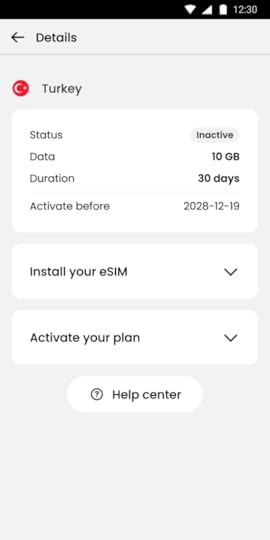
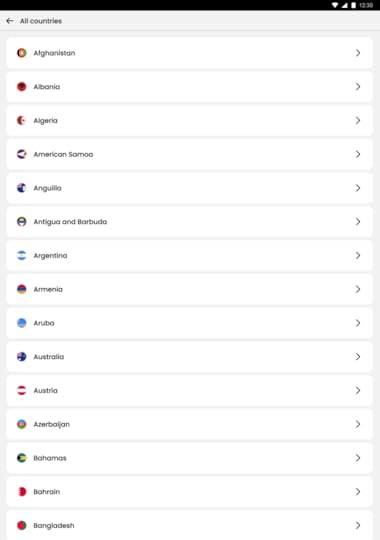
 What is Saily?
What is Saily?
Meet Saily — the innovative travel eSIM service created by the experts behind NordVPN – a well known company and one of the world’s most trusted digital privacy products. Saily is built to keep you connected anywhere, without the hassle or high roaming bills. Saily is a secure eSIM app that lets you buy, install, and manage international data plans directly from your phone. With coverage in 200+ destinations and flexible pricing, it’s designed for travellers, digital nomads, and anyone who needs reliable internet abroad.
Affordable Secure Travel Data from the Creators of NordVPNAs part of my travel planning, I’ll just download the Saily App once, pick the Asia Region Plan, and I’ll be good to go. This also means – as I’m looking to travel to Malaysia, to Vietnam, to Japan and to South Korea – there’s no need to reinstall an eSIM every time I get to my next destination and no need to pay again and again for a local SIM in each place.
I can also prepare to be online while I’m abroad before I travel – avoiding having to get think about being organised on arrival when I’m tired and jetlagged – because I’ll have download the App and have the Saily eSIM all ready on my phone – knowing it will automatically activate on arrival at my destination!
 I want to be connected to the internet as quickly as possible once I arrive at my destination
How Saily Works
Download the App – Available on iOS and AndroidChoose a Plan – Select your destination and data amountInstall Your eSIM – Follow the simple in-app stepsConnect Instantly Upon Arrival – No activation delays
Protect Your Privacy While Traveling
I want to be connected to the internet as quickly as possible once I arrive at my destination
How Saily Works
Download the App – Available on iOS and AndroidChoose a Plan – Select your destination and data amountInstall Your eSIM – Follow the simple in-app stepsConnect Instantly Upon Arrival – No activation delays
Protect Your Privacy While Traveling
Another feature of Saily is that of security. In activating Saily’s security features I know my privacy is protected. I’ve often felt anxious about using an open WIFI at an airport or other transit hub or connecting to a hotel WIFI – especially if I’m doing something like connecting to my bank .
I’m aware that unsecured networks can be used and abused by scammers and hackers. But with Saily’s advanced security features and web protection I can stay safer and I can browse the internet more confidently. I can even change my virtual location – an option that allows users to browse the web as if they were in another country – similar to how a VPN works. I can also block malicious ads as Saily’s built-in ad blocker stops browser ads loading and that can also reduce my data usage by up to 28.6%.
With Saily, staying connected also means staying safe:
Change your virtual locationBlock malicious ads and suspicious sitesReduce data usage by up to 28.6% with ad blocking NEW – Saily Ultra Premium Plan
NEW – Saily Ultra Premium Plan
If you work when you travel and using a cyber security and VPN is important to you and having unlimited data is non-negotiable – then Saily Ultra – a new premium subscription that takes your travel connectivity to the next level. Saily Utila provides secure cloud storage, cross border high speed data, and a built in security system.
Unlimited international eSIM data8% cashback in Saily creditsNordVPN subscription includedPremium supportUpcoming perks: airport lounge access & fast-track services WHY CHOOSE SAILY?GLOBAL COVERAGE: Access affordable data in 190+ countries. Choose between local, regional, or global plans. No More Roaming Bill Shock. Avoid expensive mobile roaming fees. Know your costs before you travel. Stay Connected Without Interruptions
PLUS: Notifications when you reach 80% of your data. Top-up in just a few clicks. Install Once, Use Everywhere. No need to reinstall for every trip. One eSIM works for multiple destinations
FLEXIBLE AND AFORDABLE: From 1 GB weekly plans to 100 GB long-term packages. Unlimited data plans available.
EXTRA BENEFITS YOU’LL LOVE: 24/7 Instant Chat Support – help is always available. Safer Browsing – built-in ad blocker & web protection. Fewer Queues, Less Hassle – skip airport SIM card lines. Avoid Scams – no street-side SIM sellers to worry about. Earn Saily Credits – get cashback on purchases. Full Refund Guarantee – if your device isn’t eSIM-compatible
 The Backpacking Housewife at London Heathrow
Why I Think Saily Stands Out
The Backpacking Housewife at London Heathrow
Why I Think Saily Stands Out
Whether you’re a frequent flyer, a business traveller, a digital nomad, a casual vacationer, or a backpacking housewife like me – Saily makes travel data simple, affordable, and secure — all in one app.
From instant setup to advanced privacy tools, Saily ensures you stay connected and protected, wherever you go.
For an affordable, innovative, and secure travel eSIM app, I choose Saily!
Get Affordable eSIM data for International Travel
The post Over 50’s Guide To Staying Connected While You Travel! appeared first on The Backpacking Housewife.



